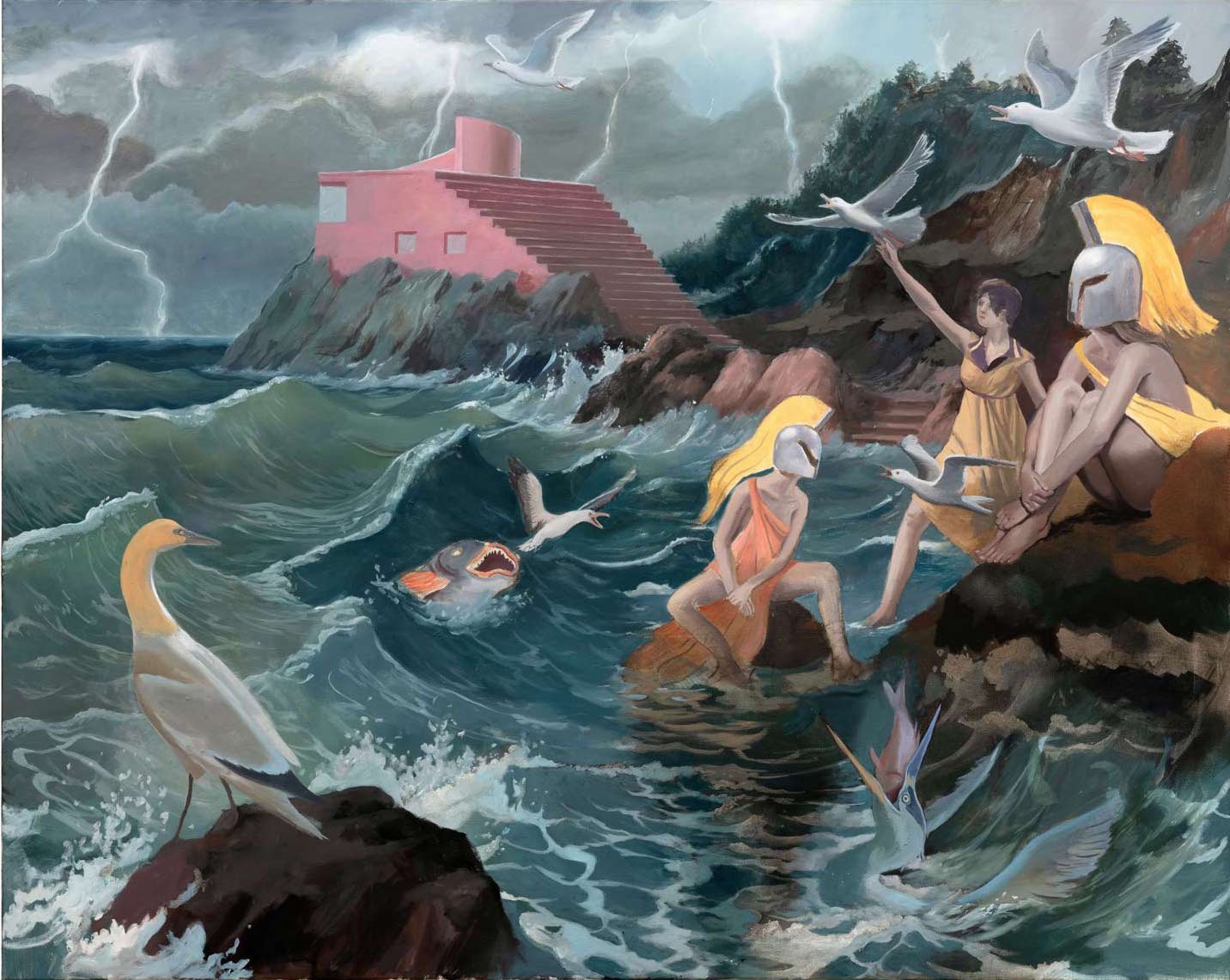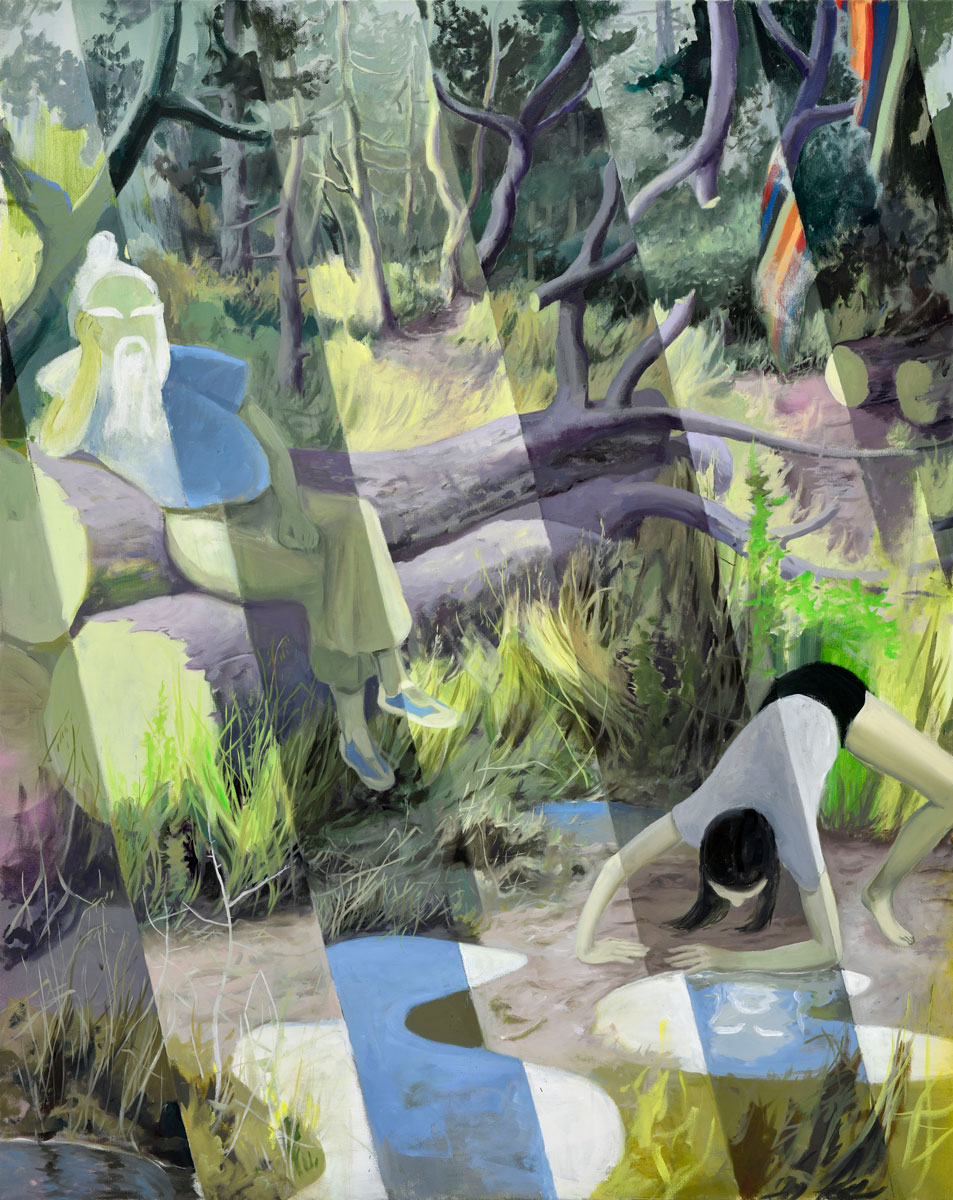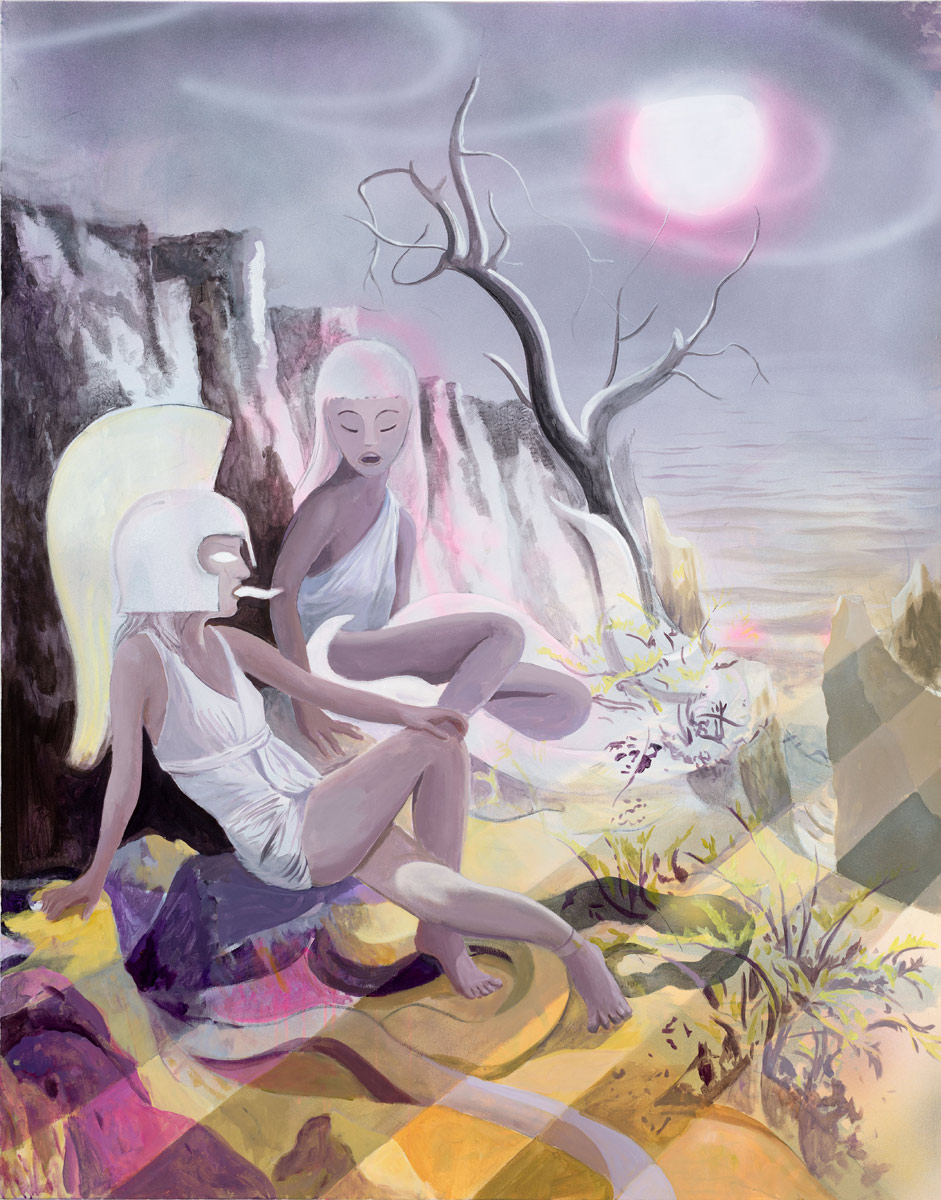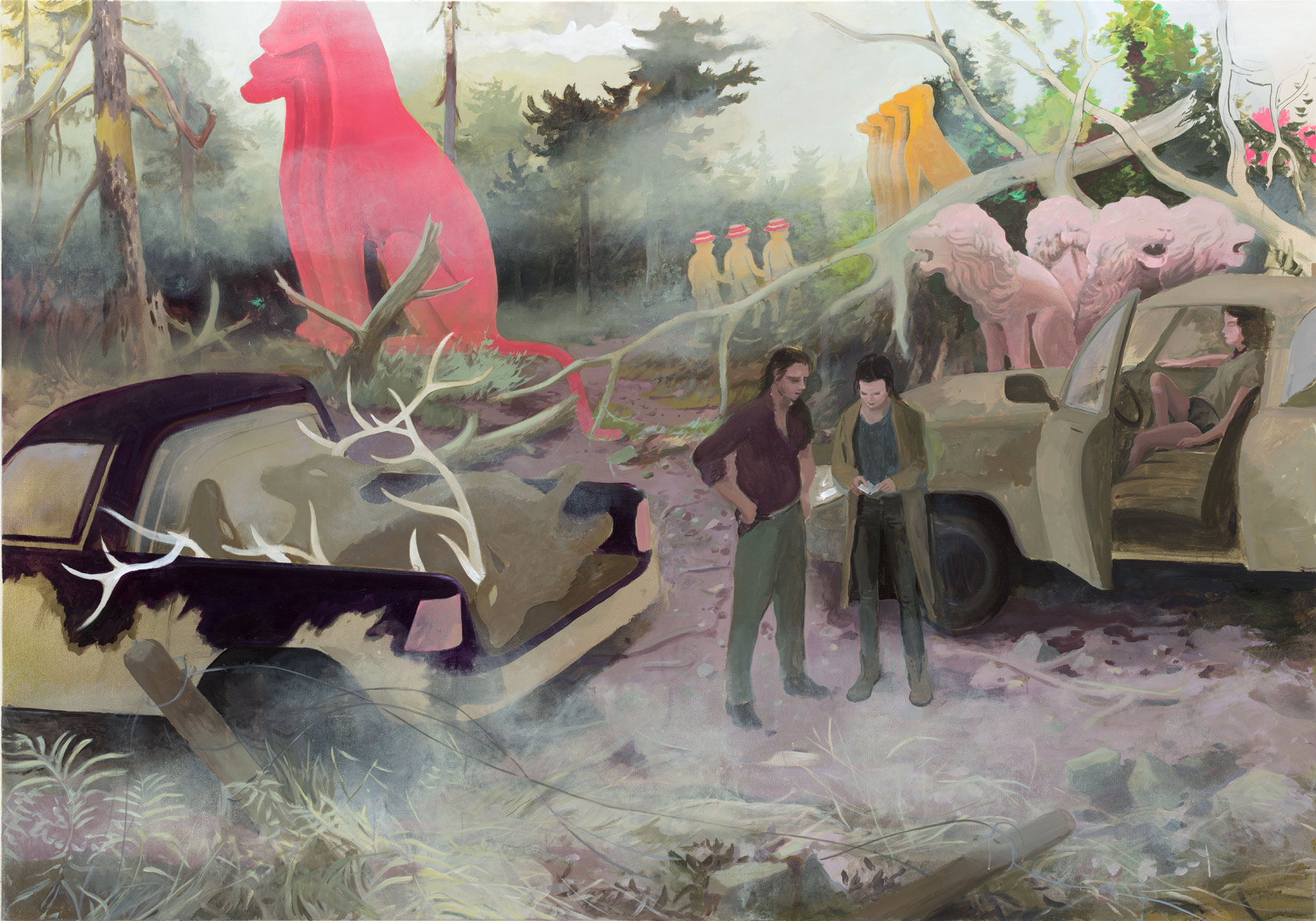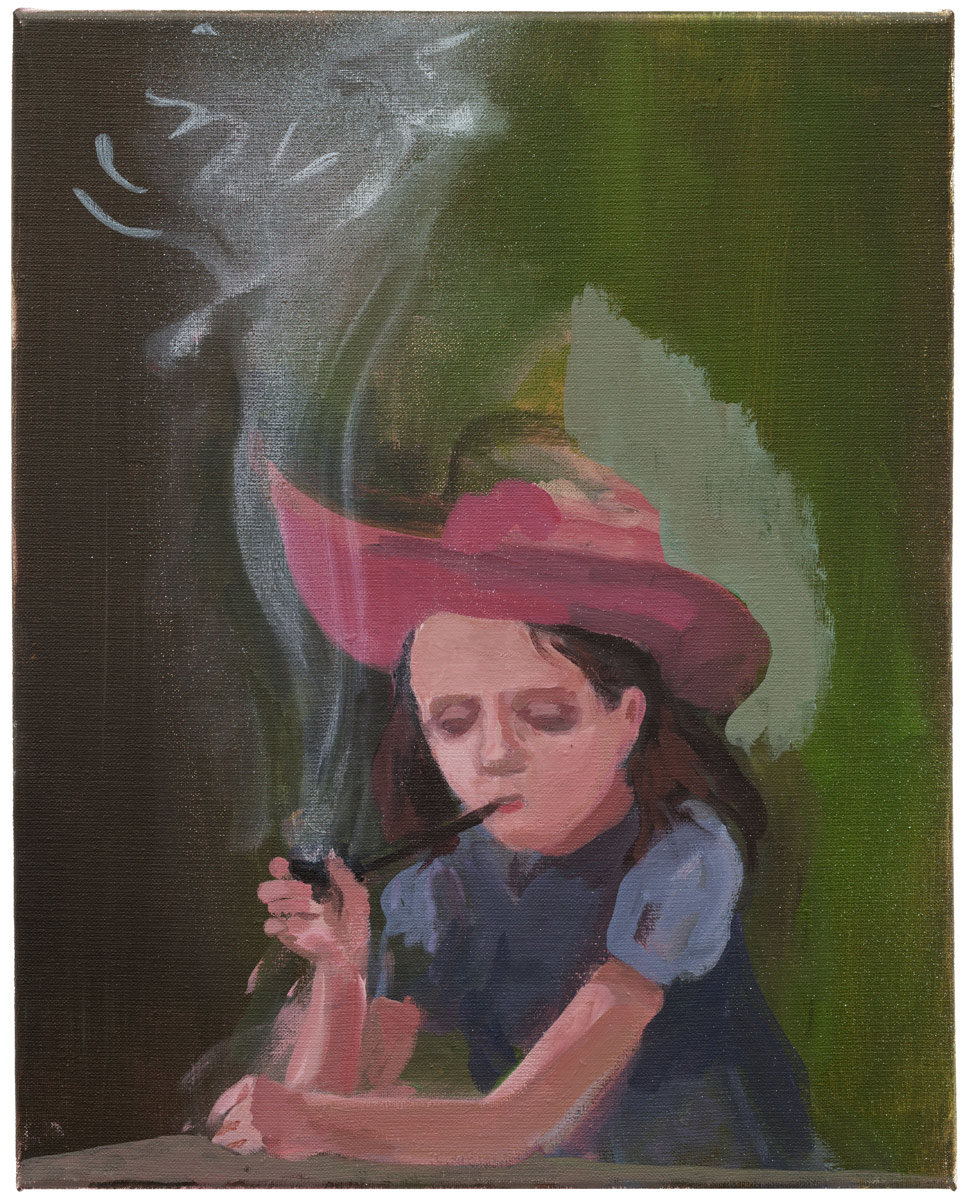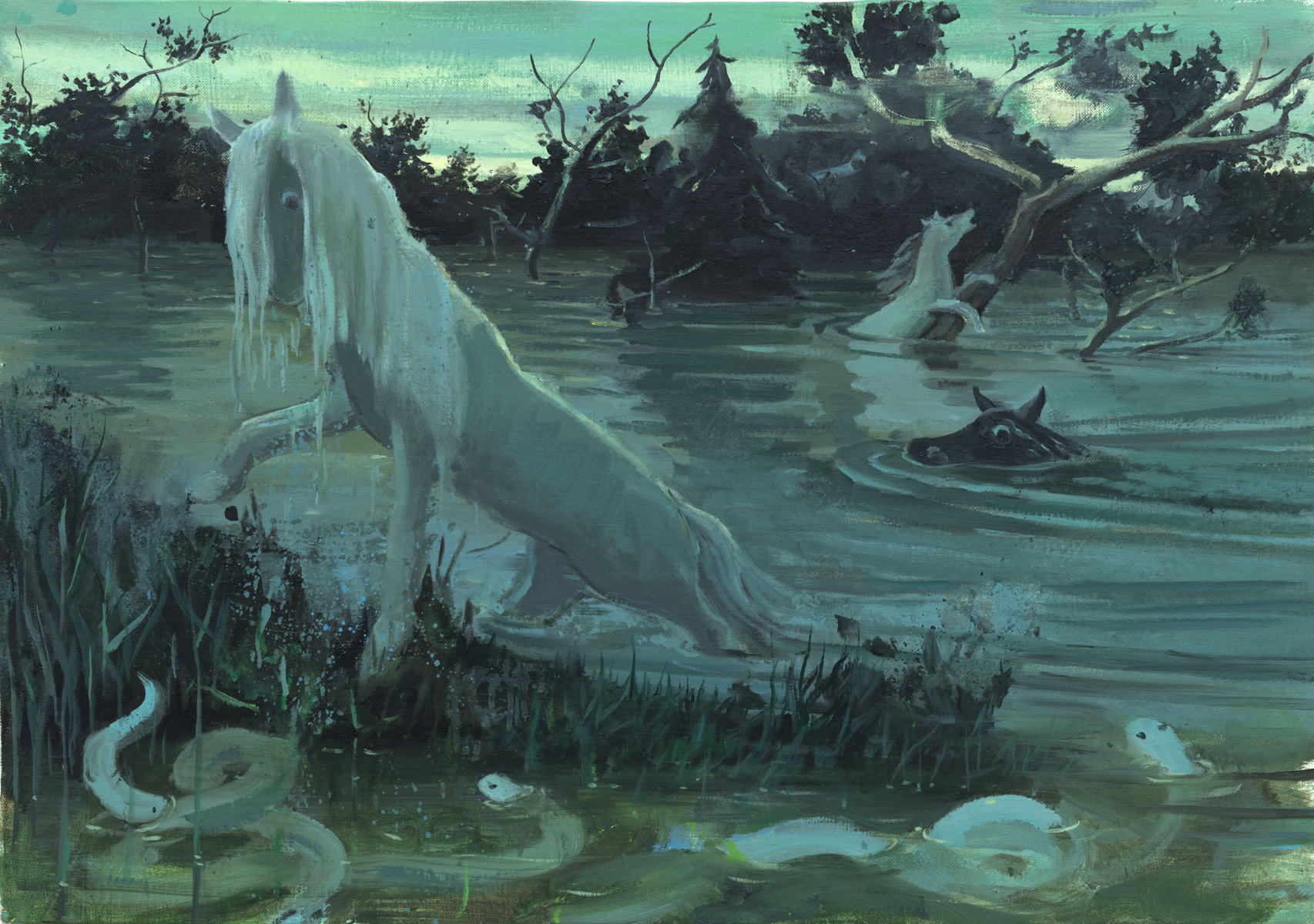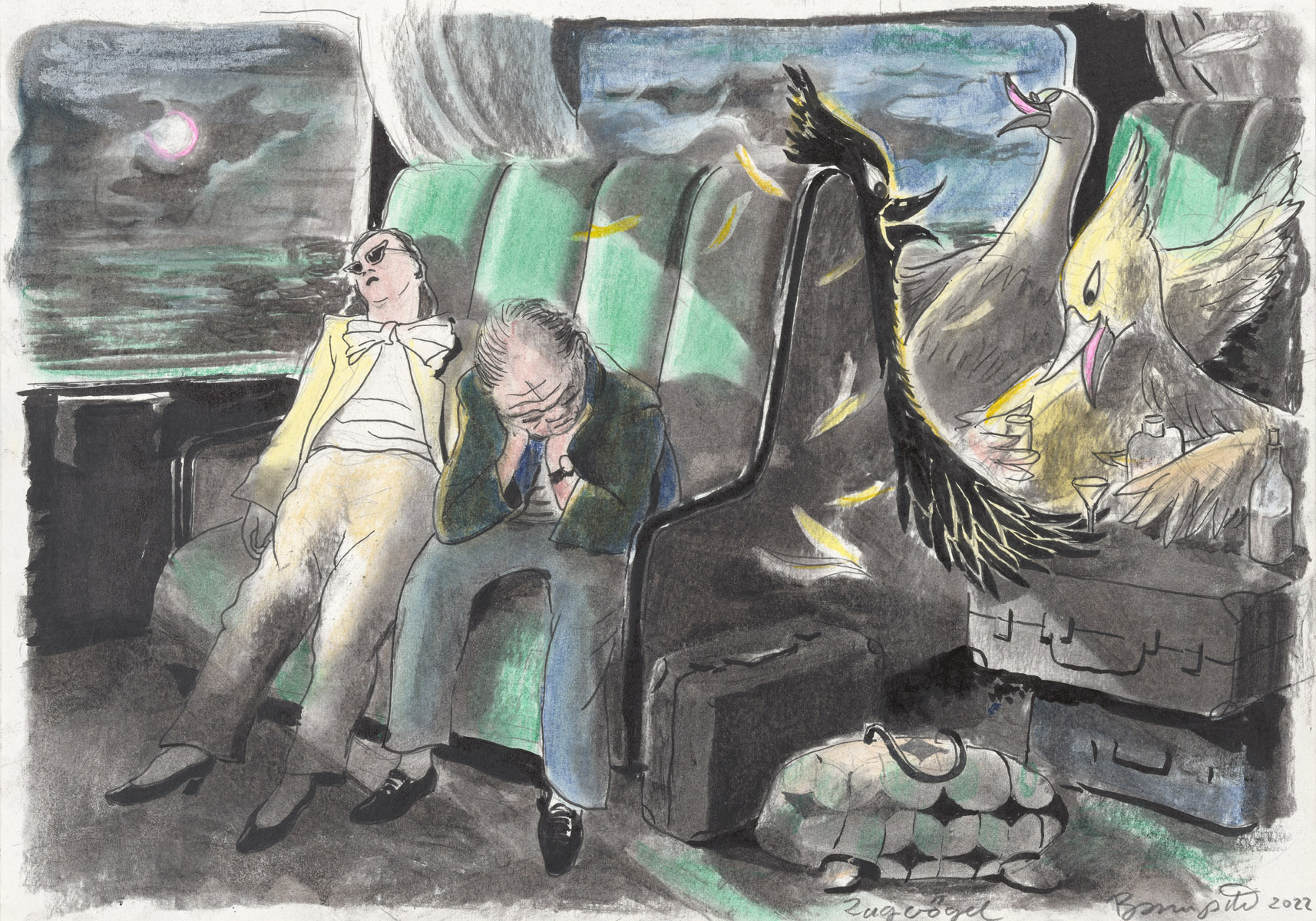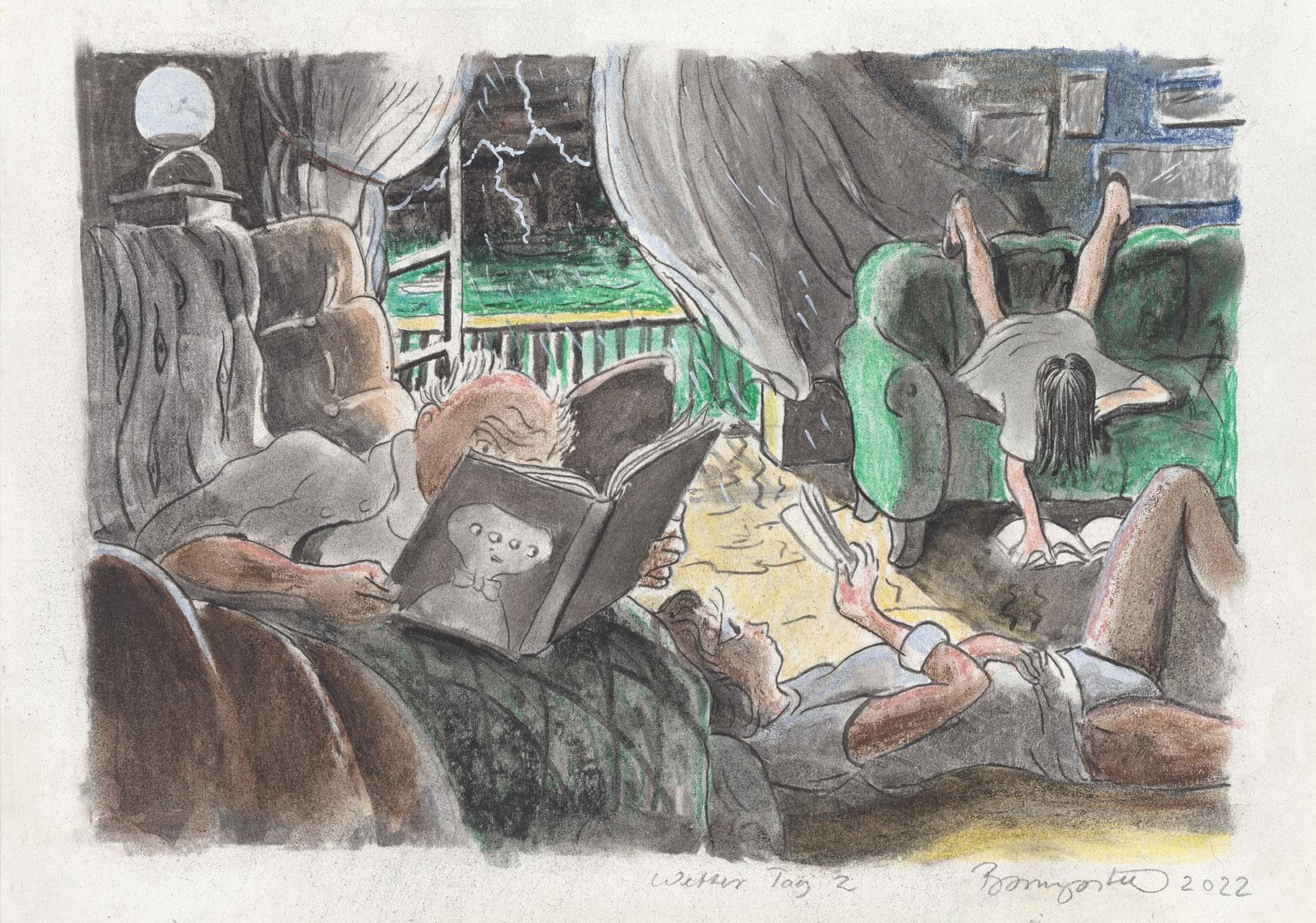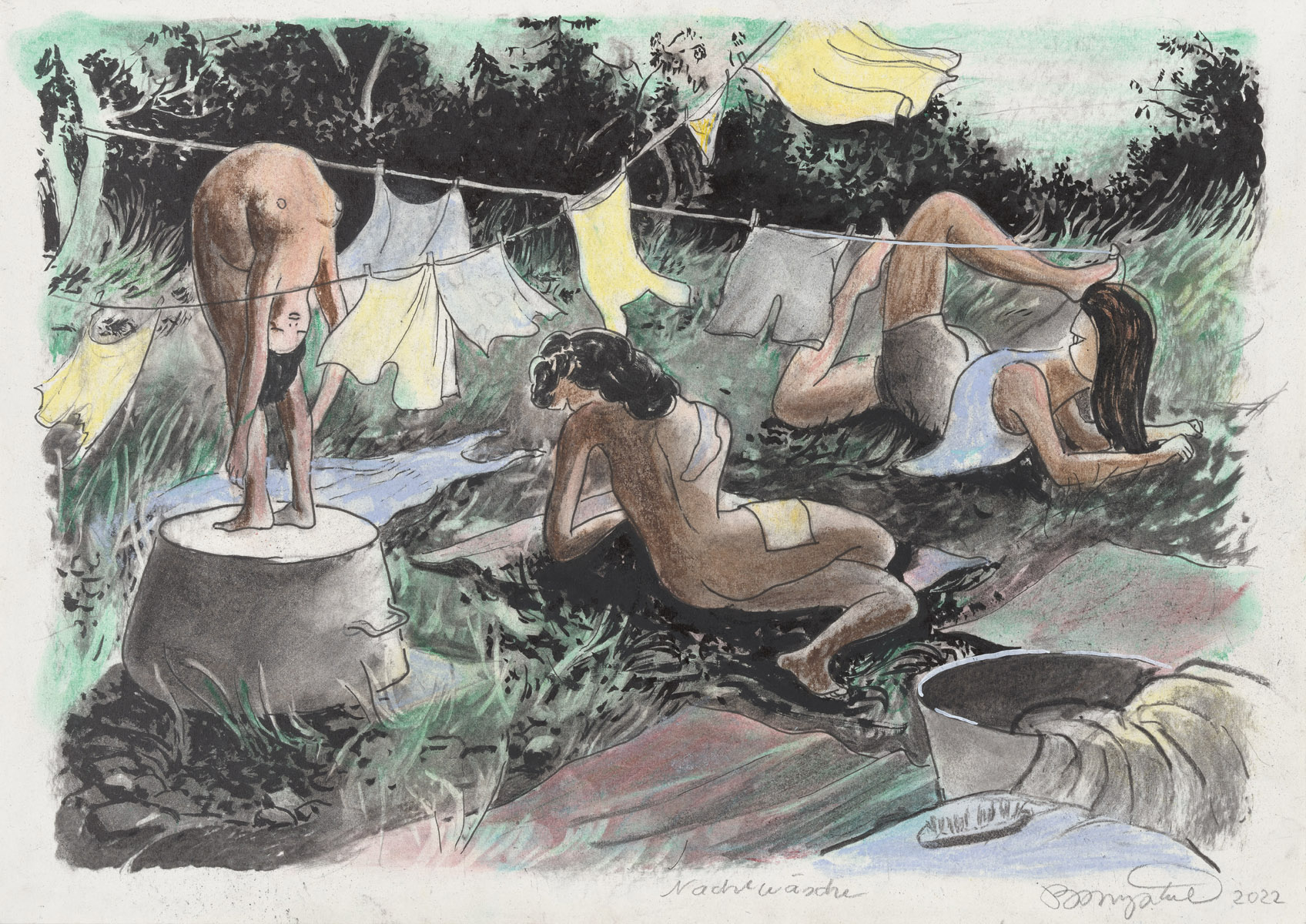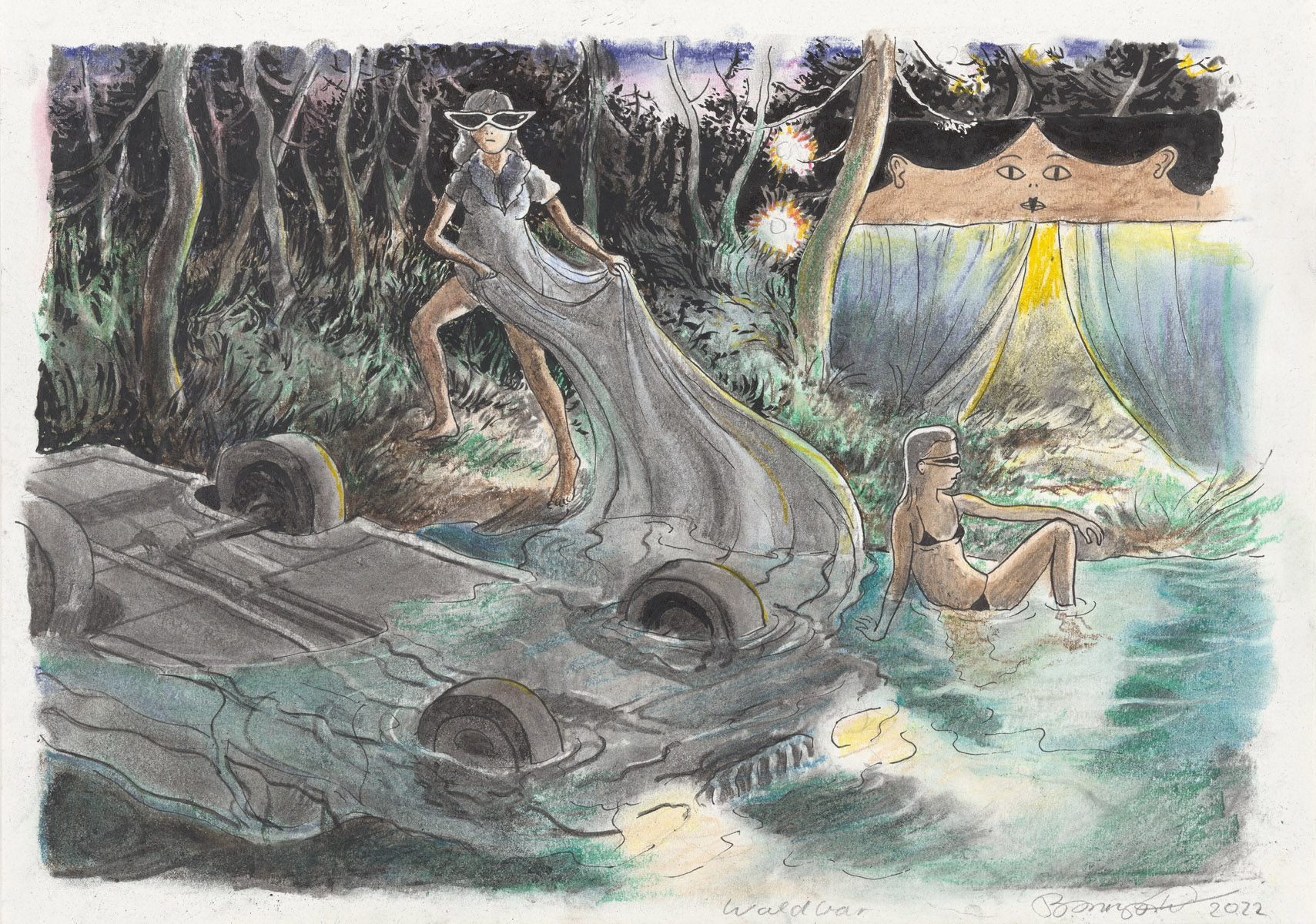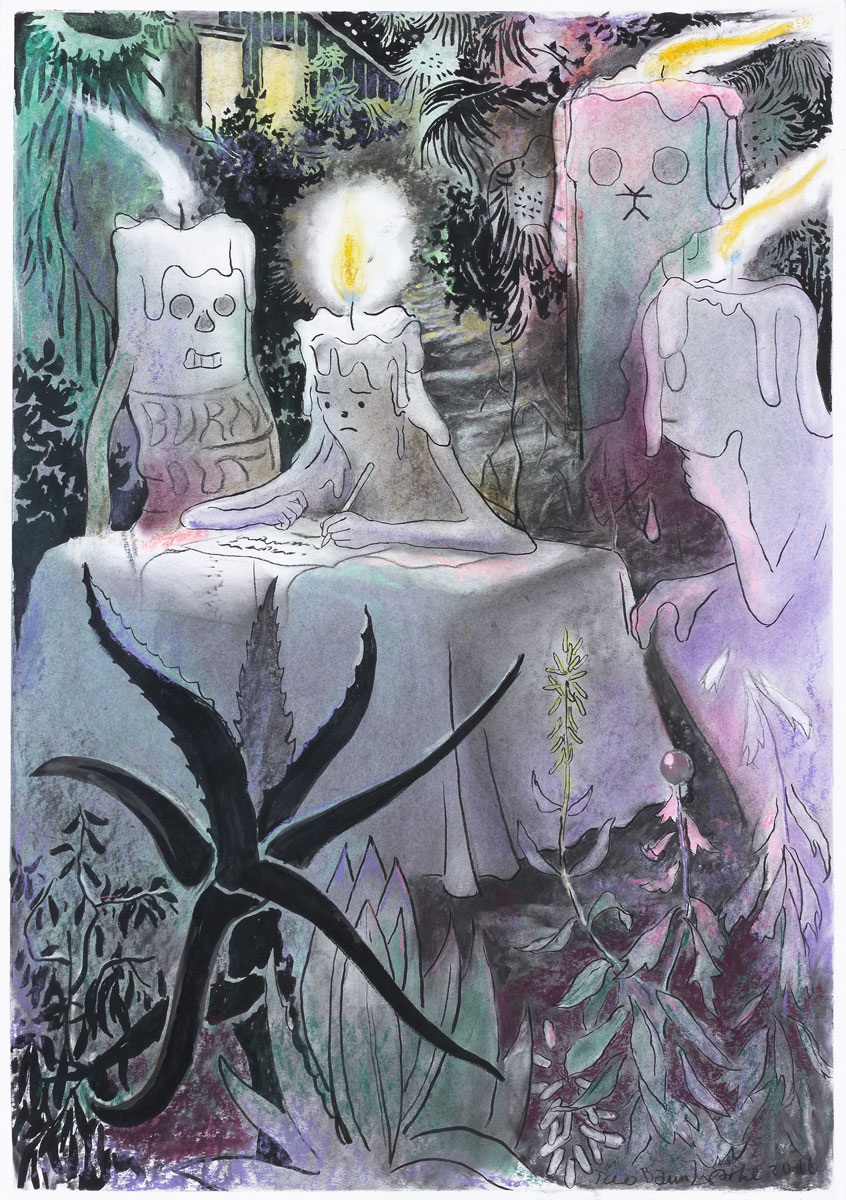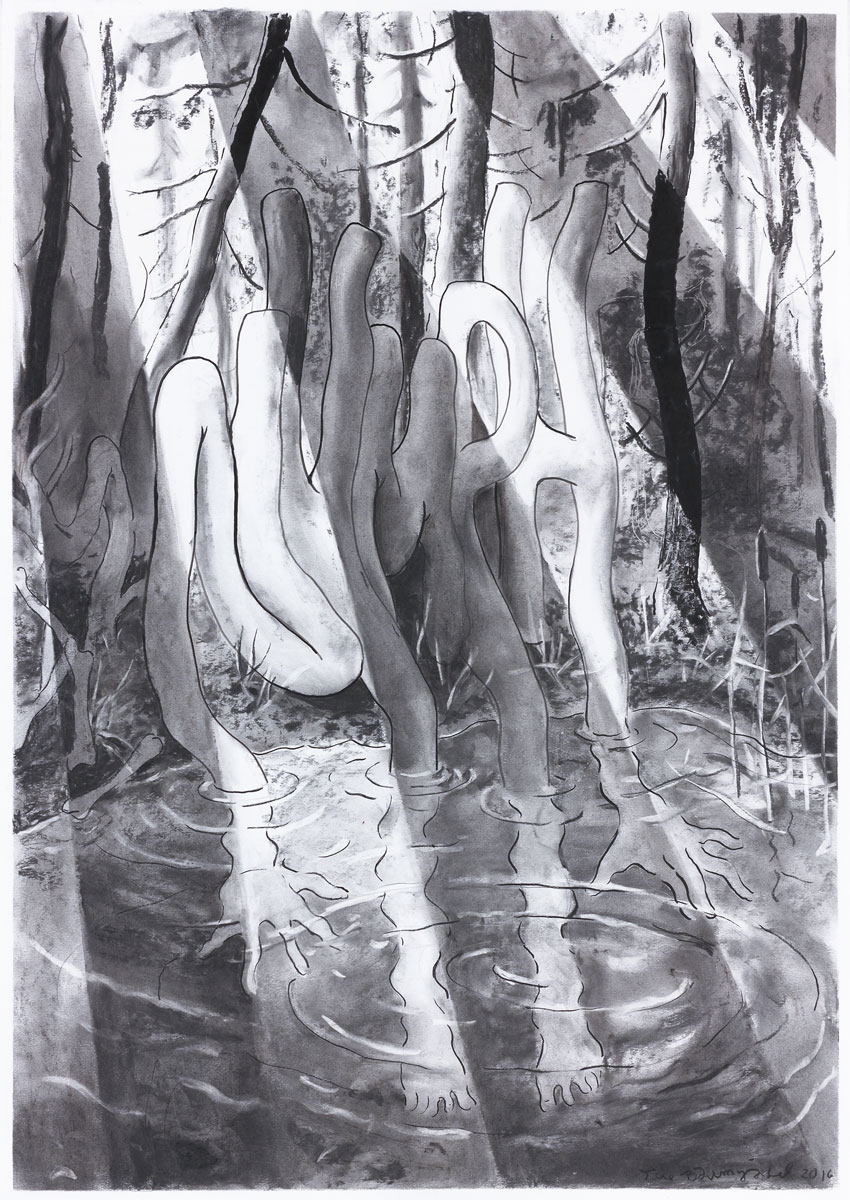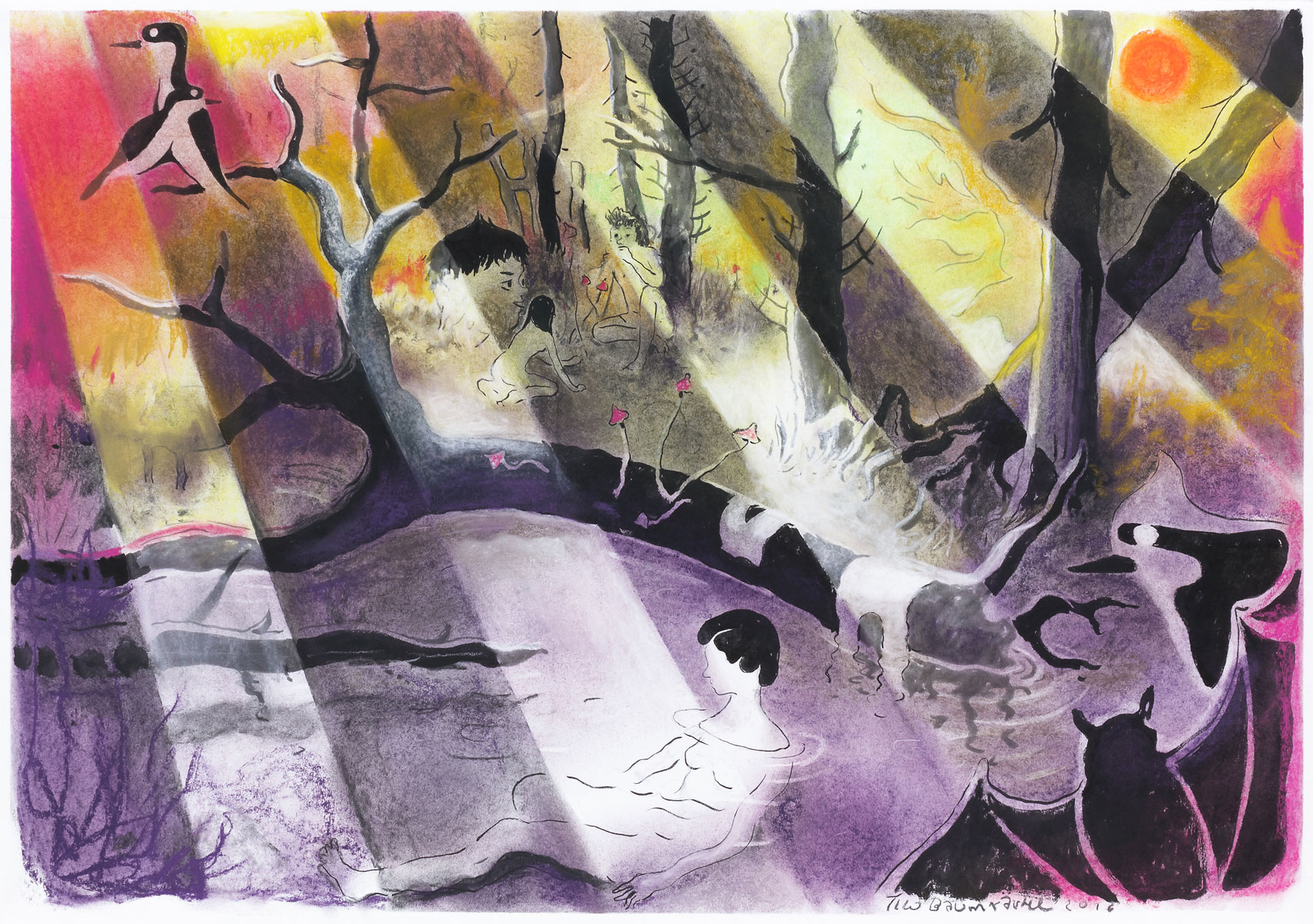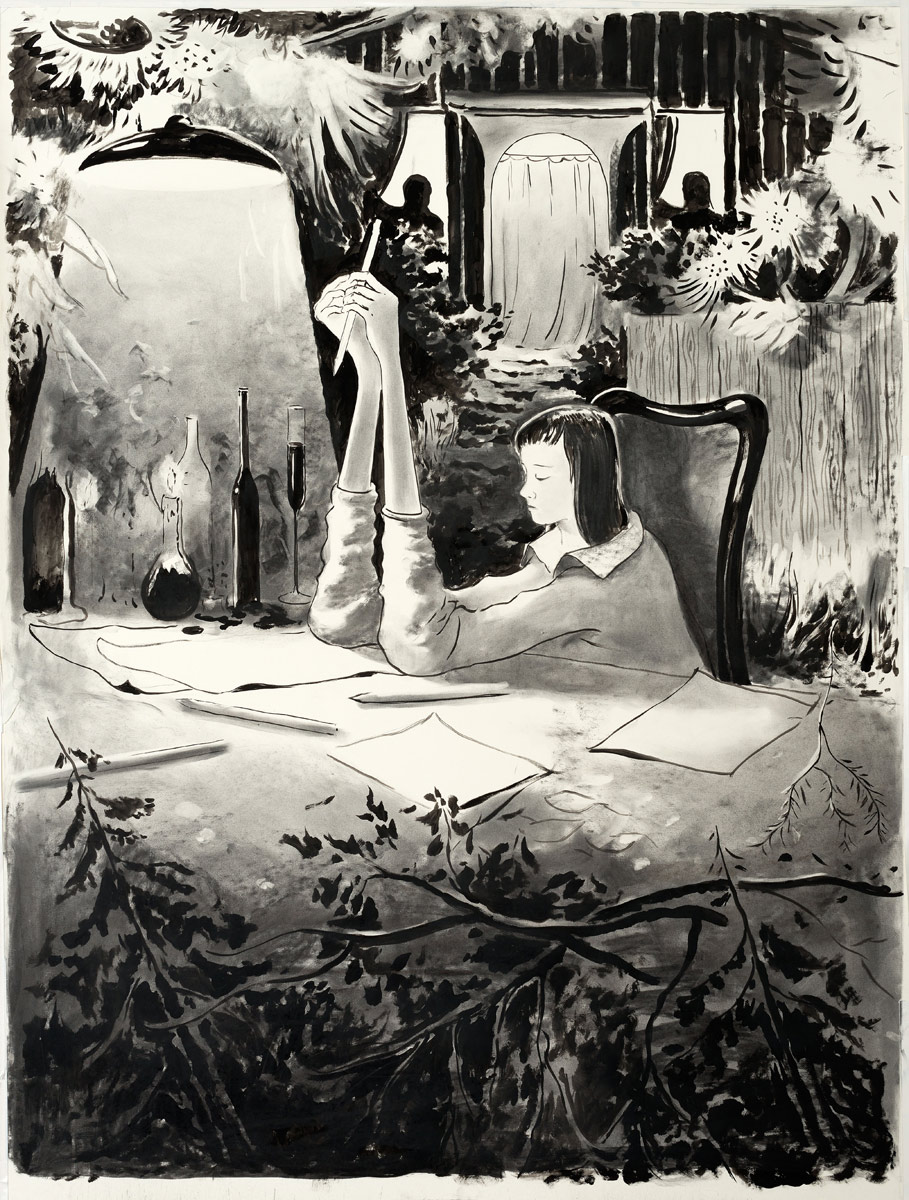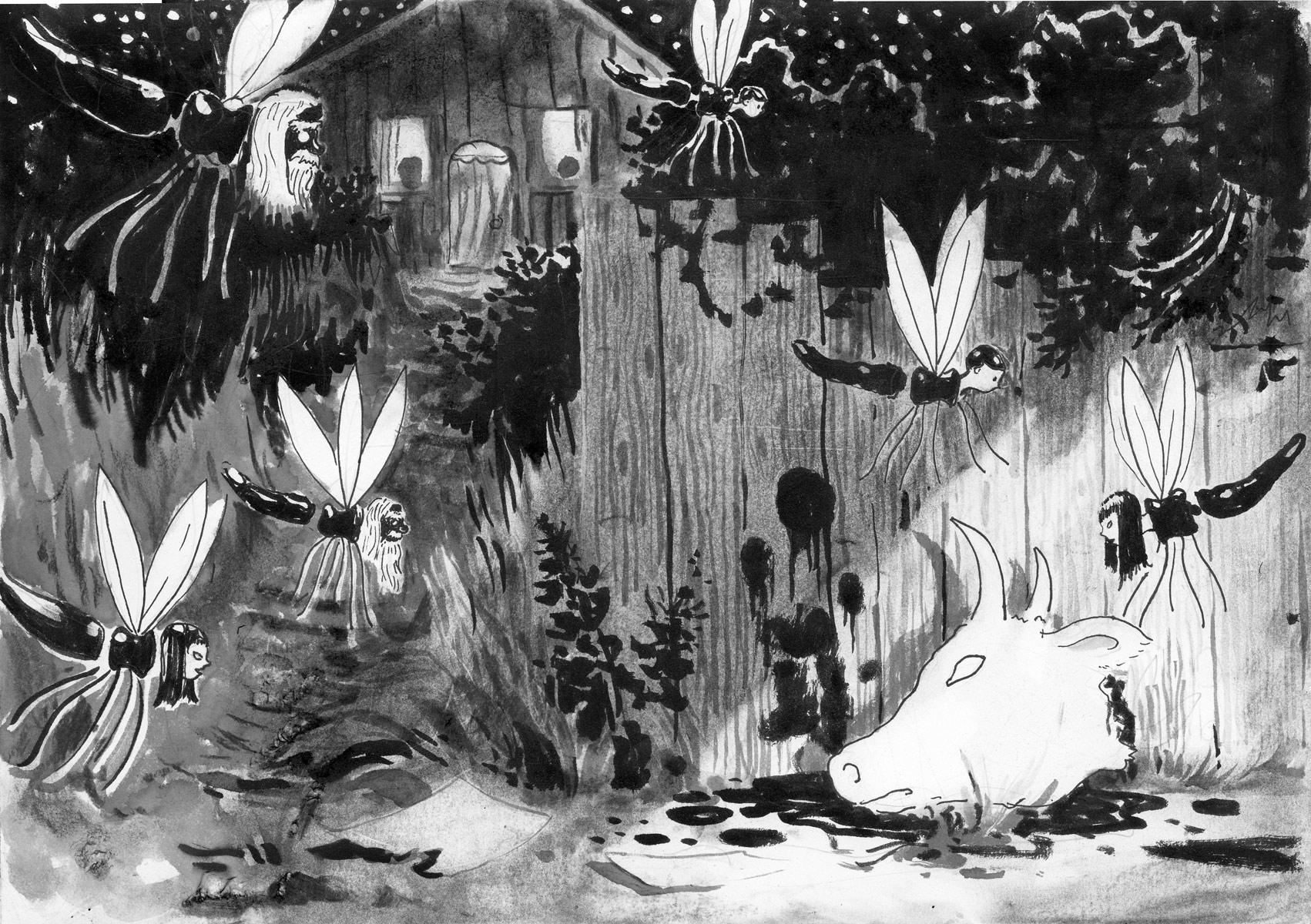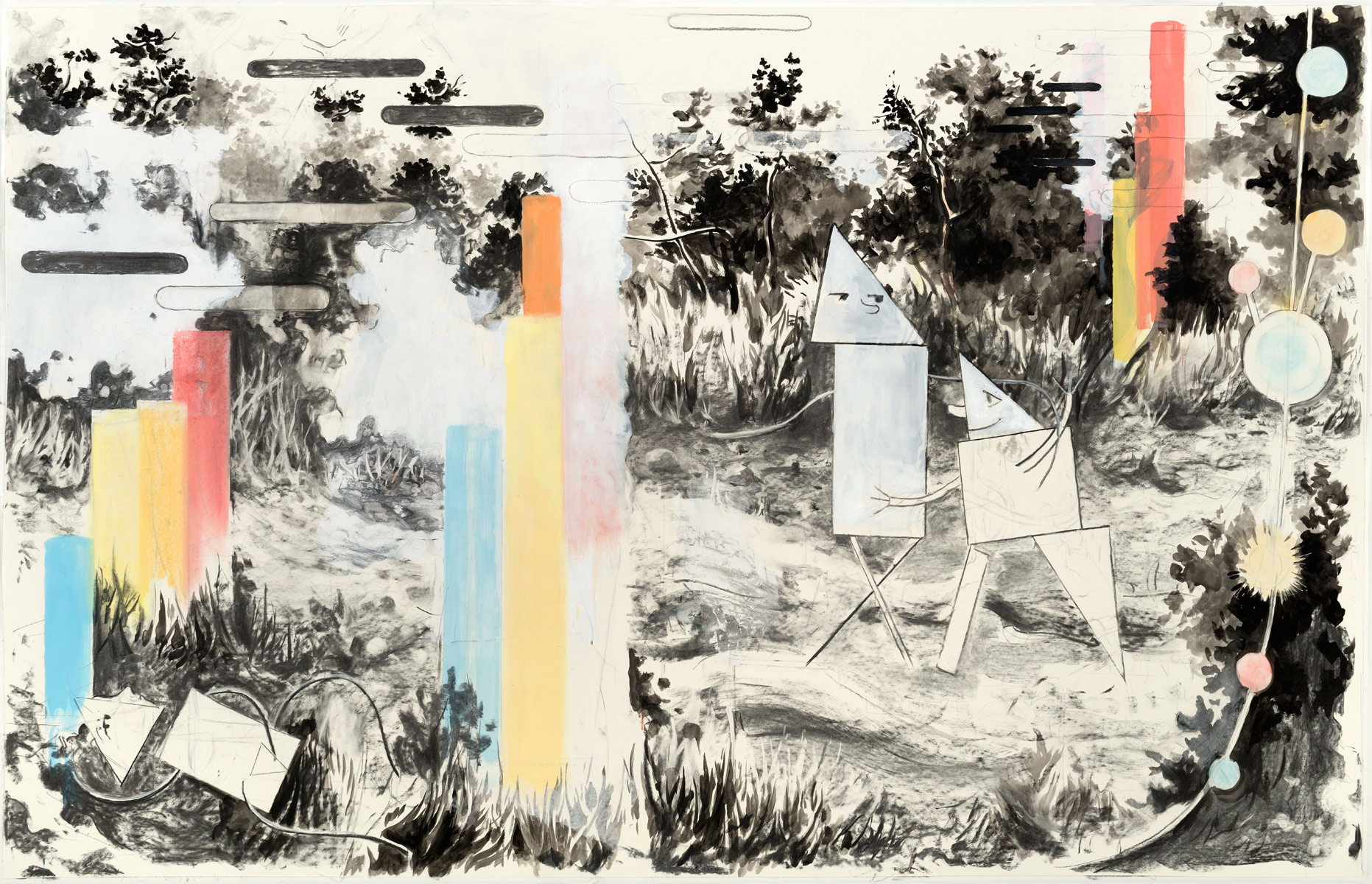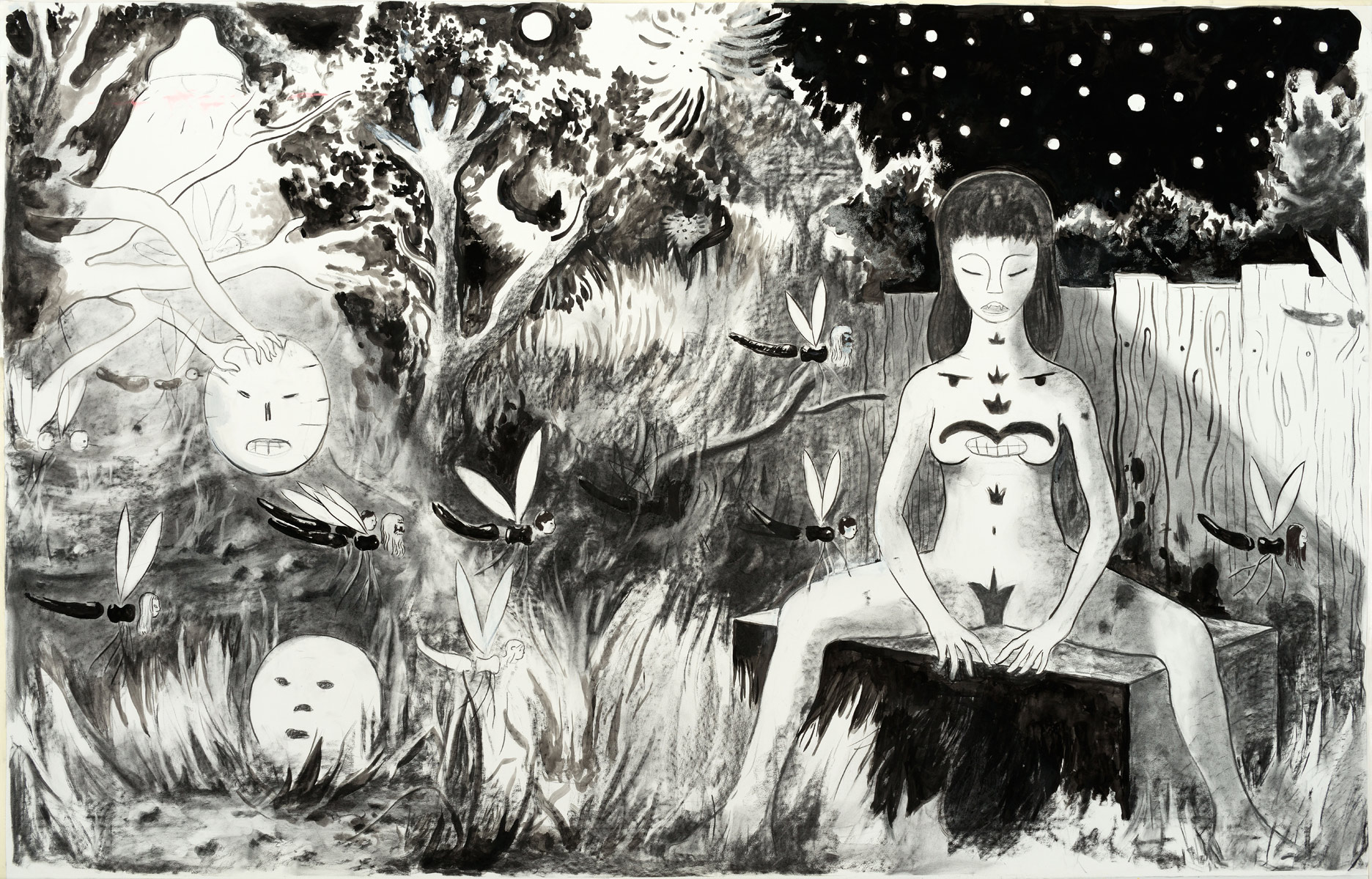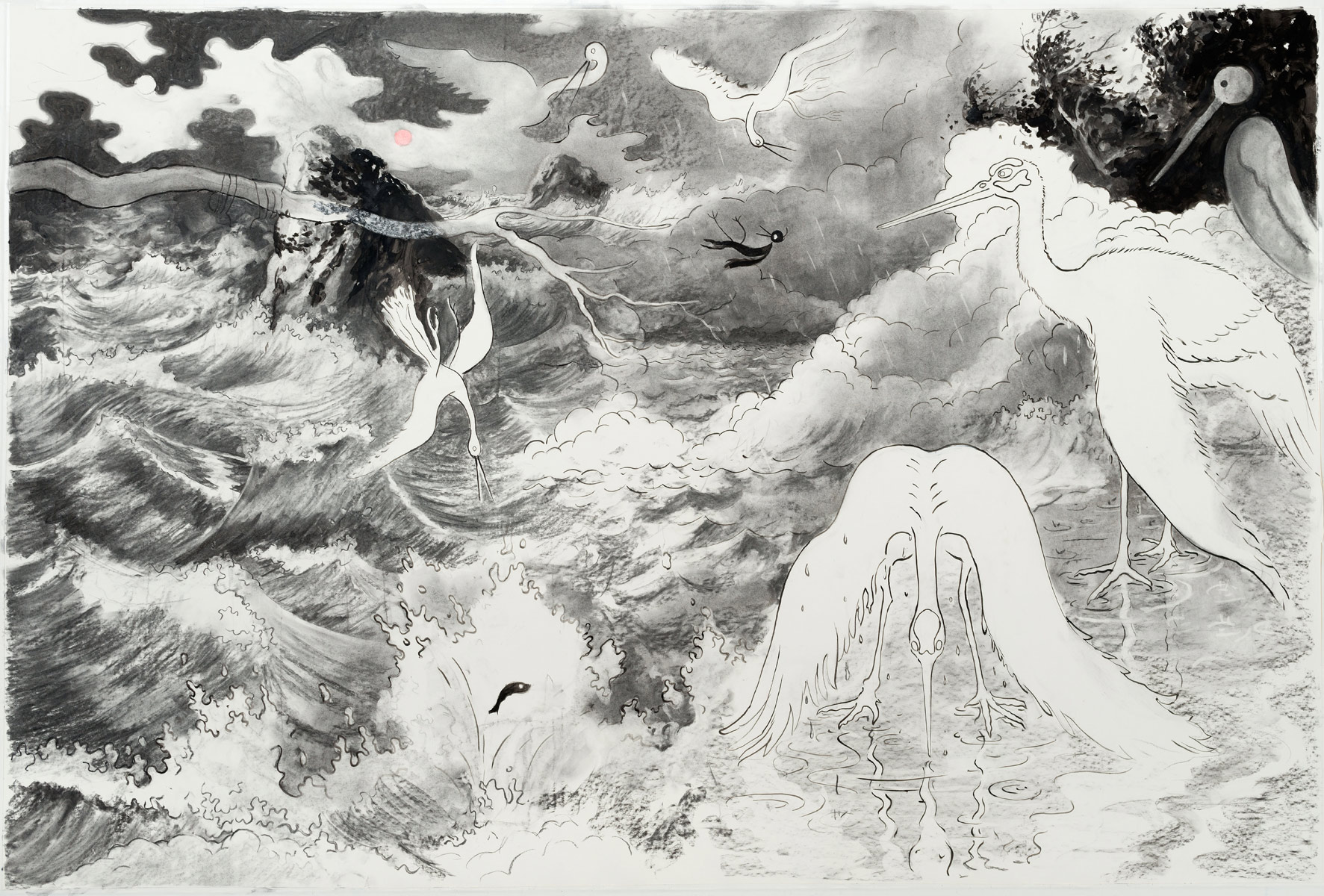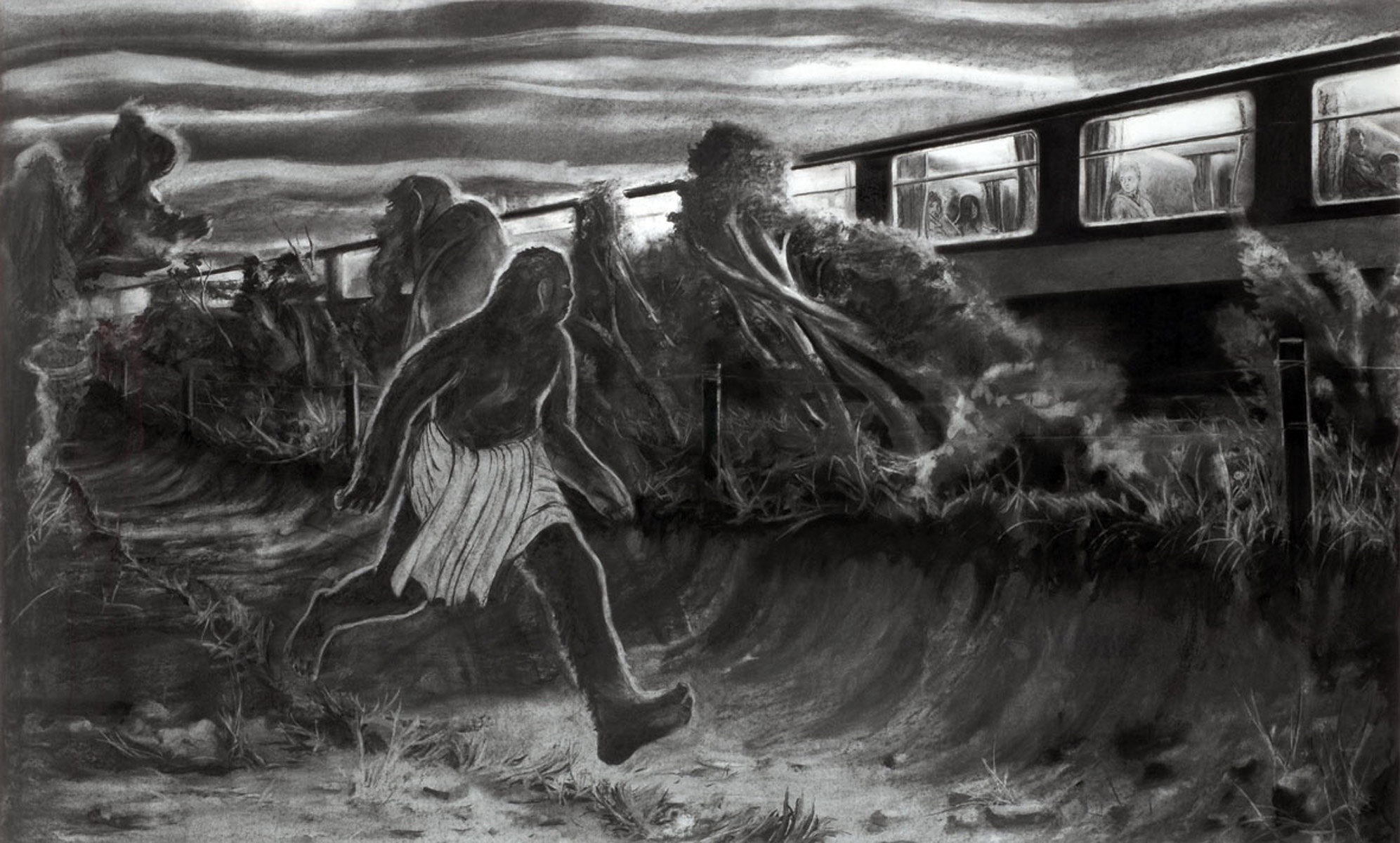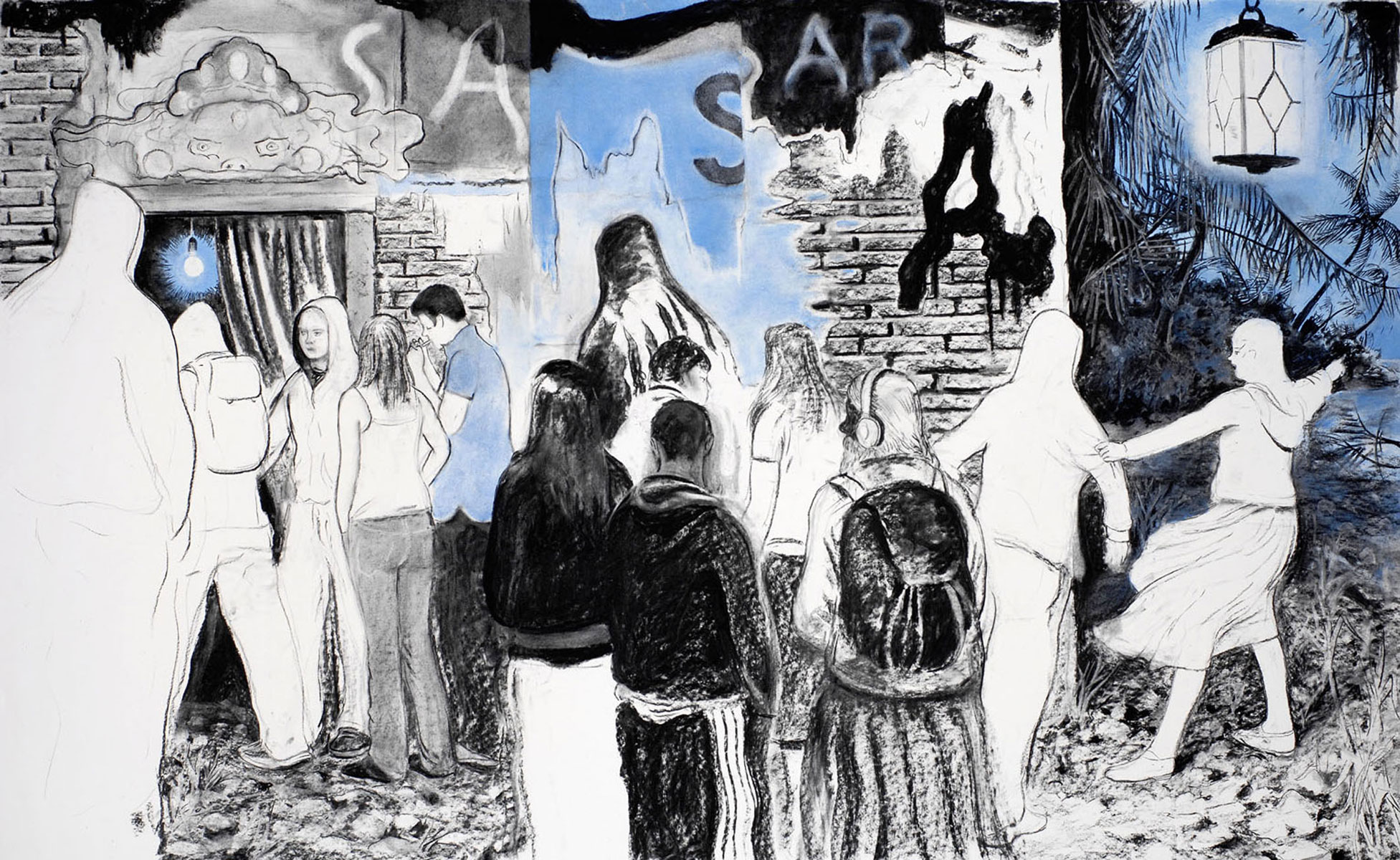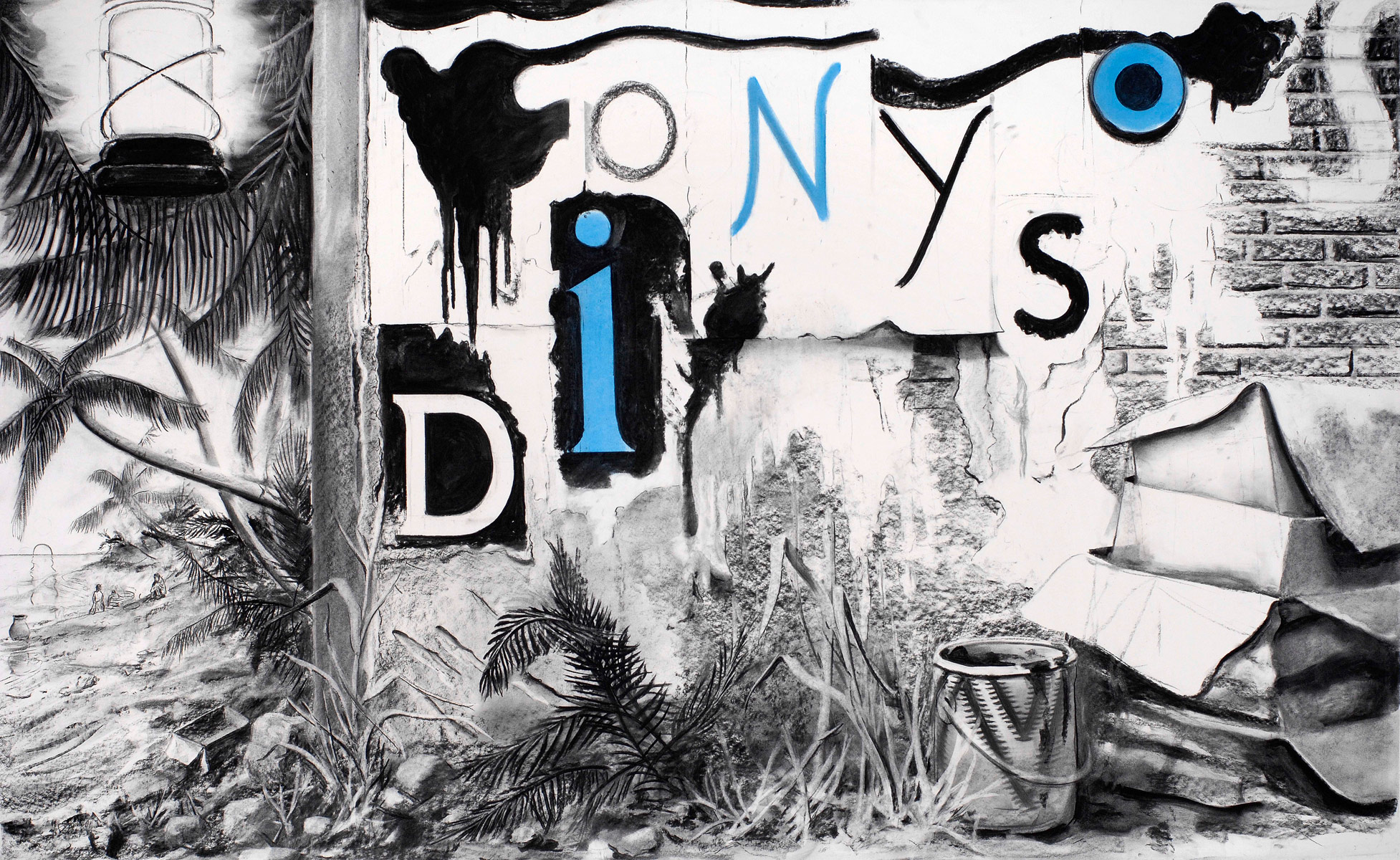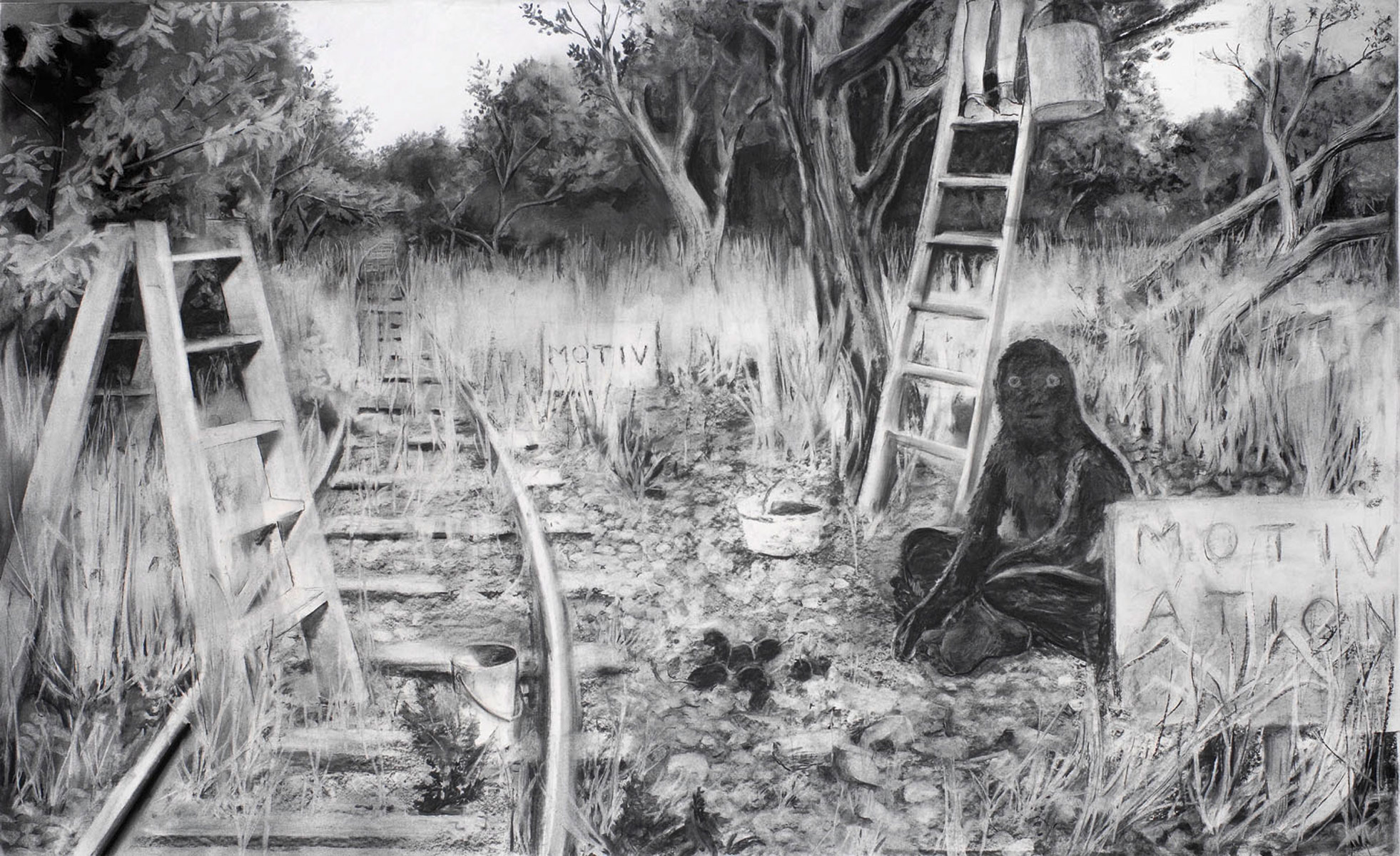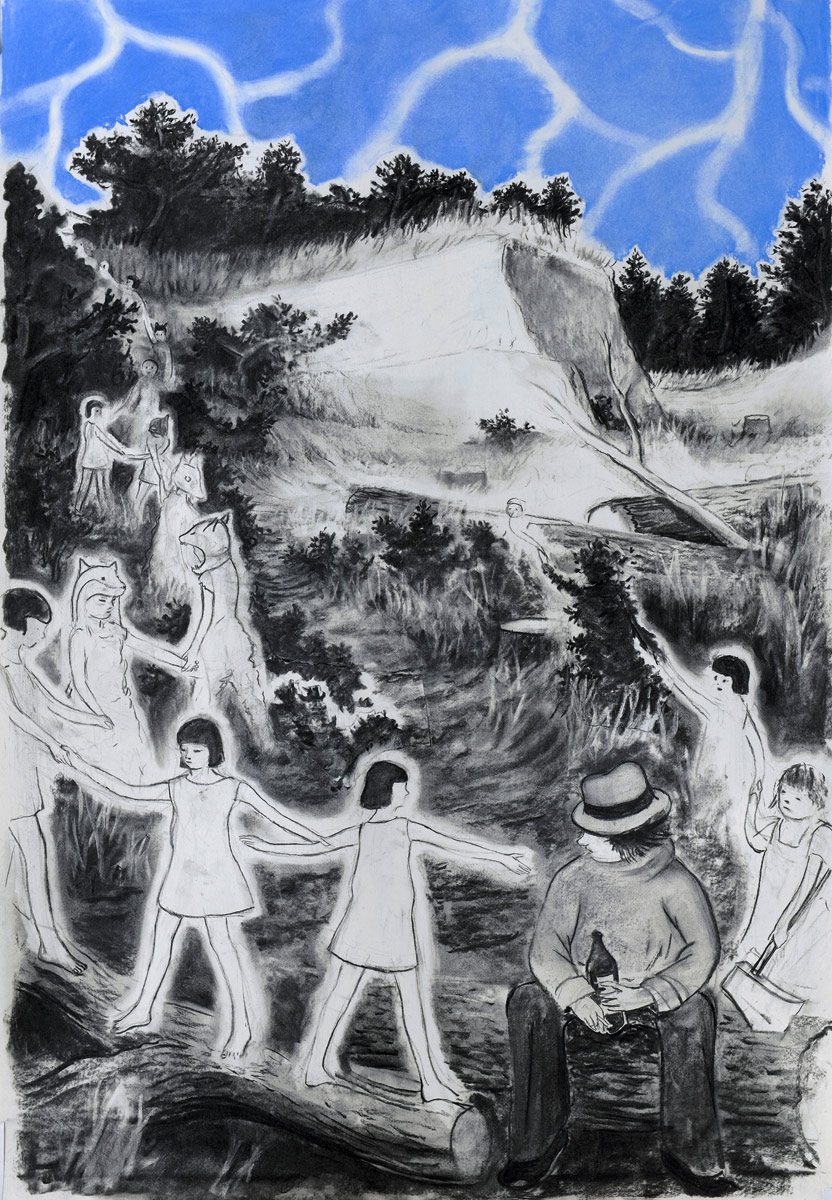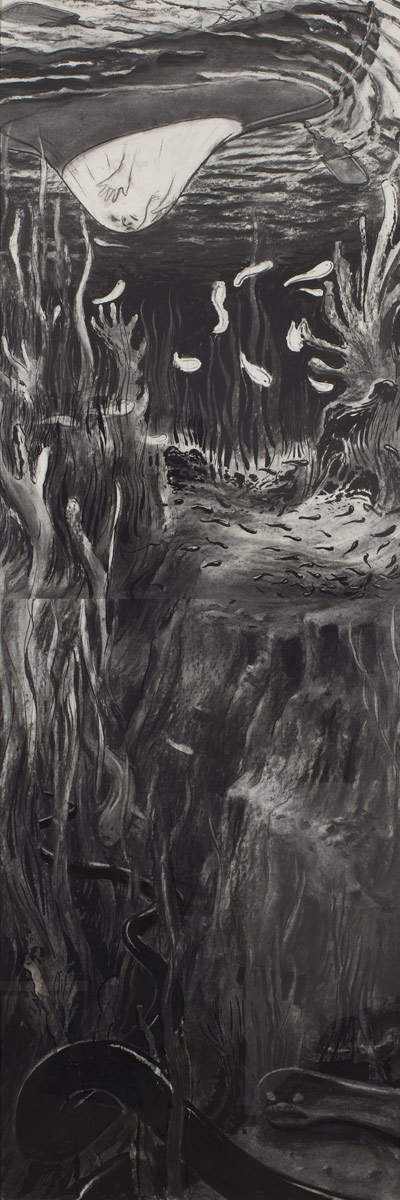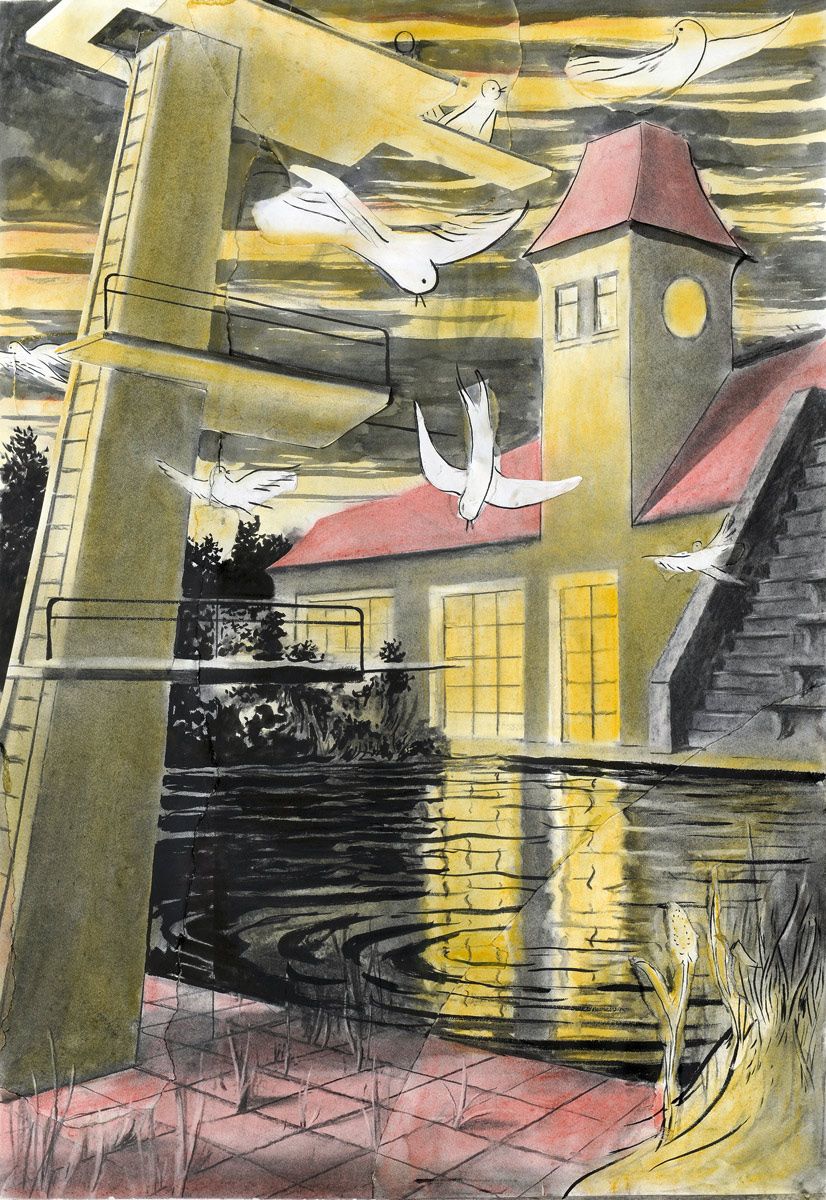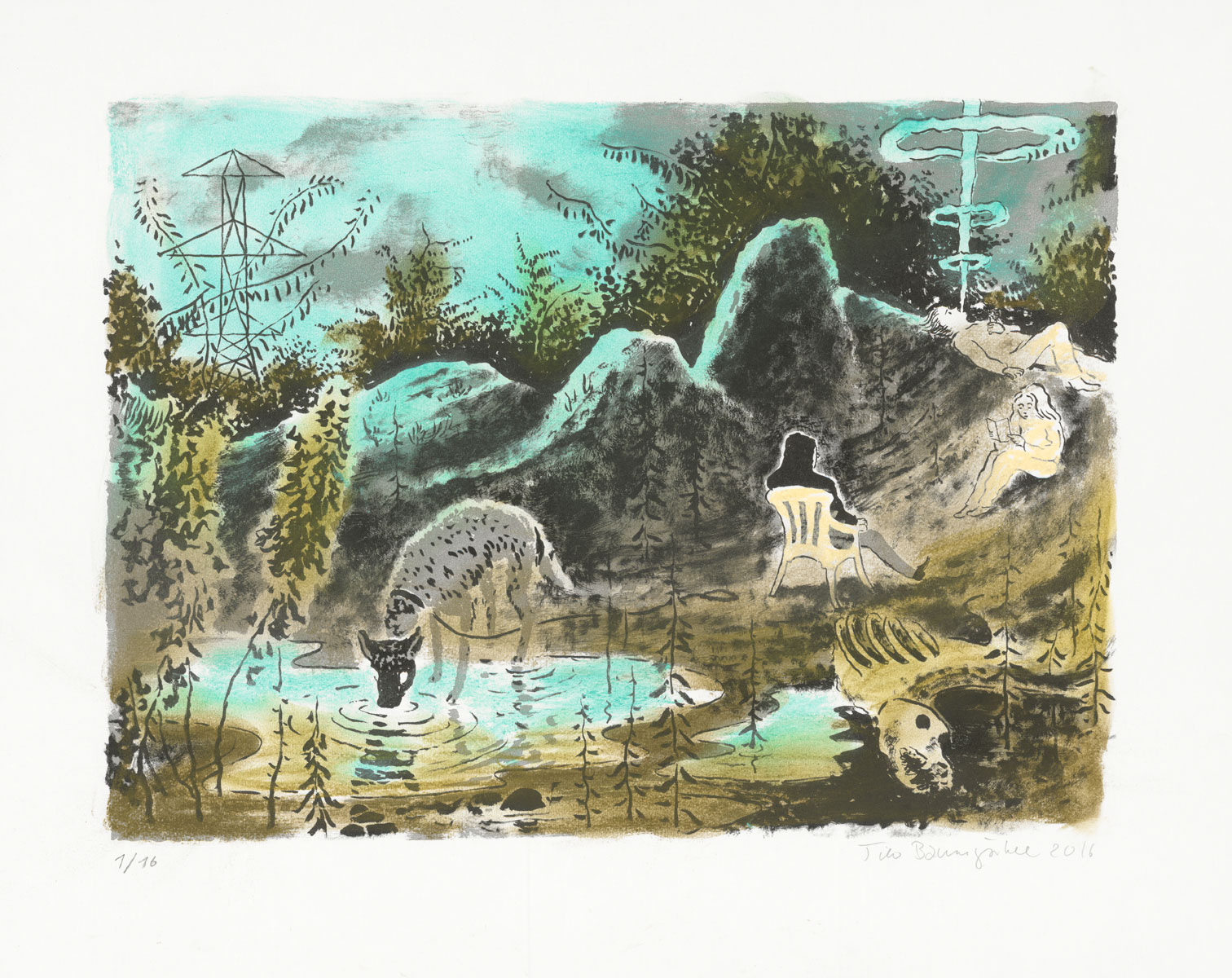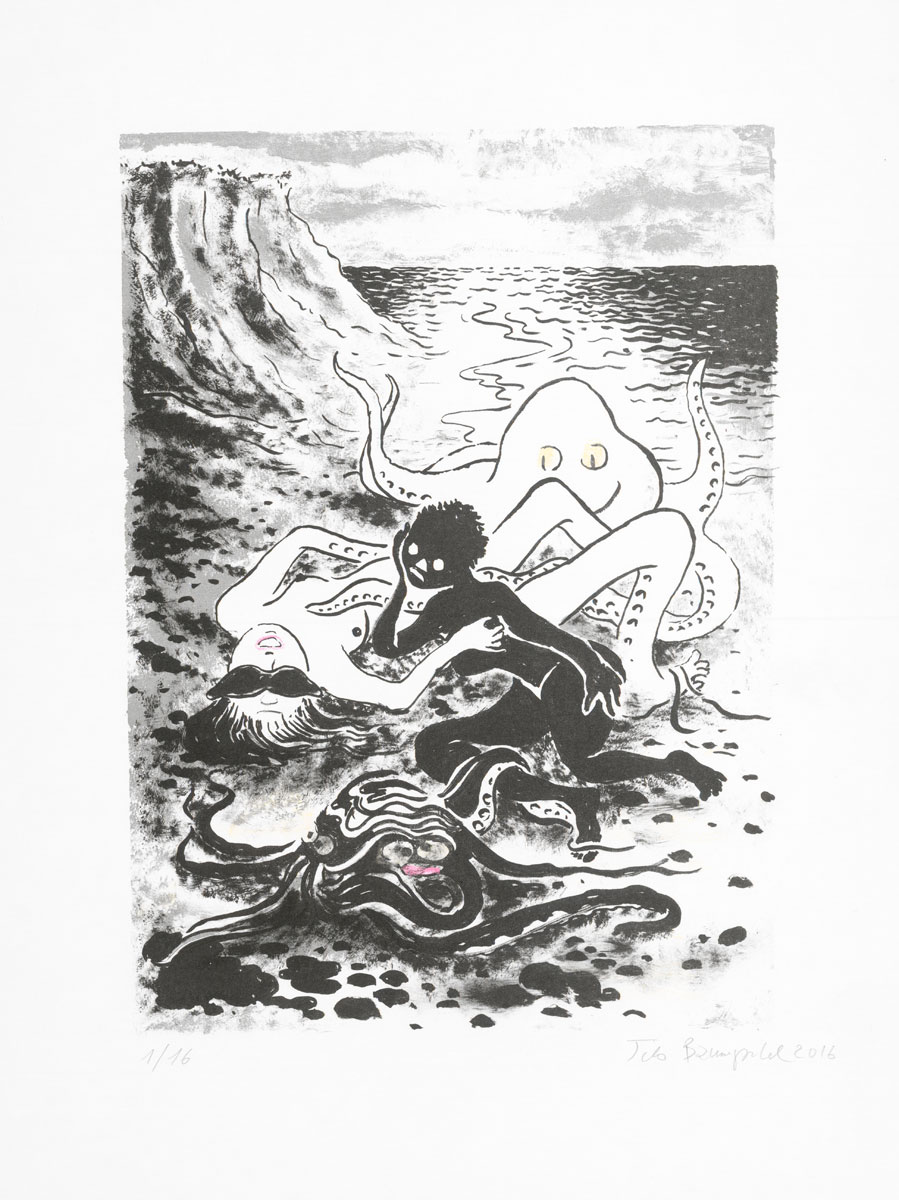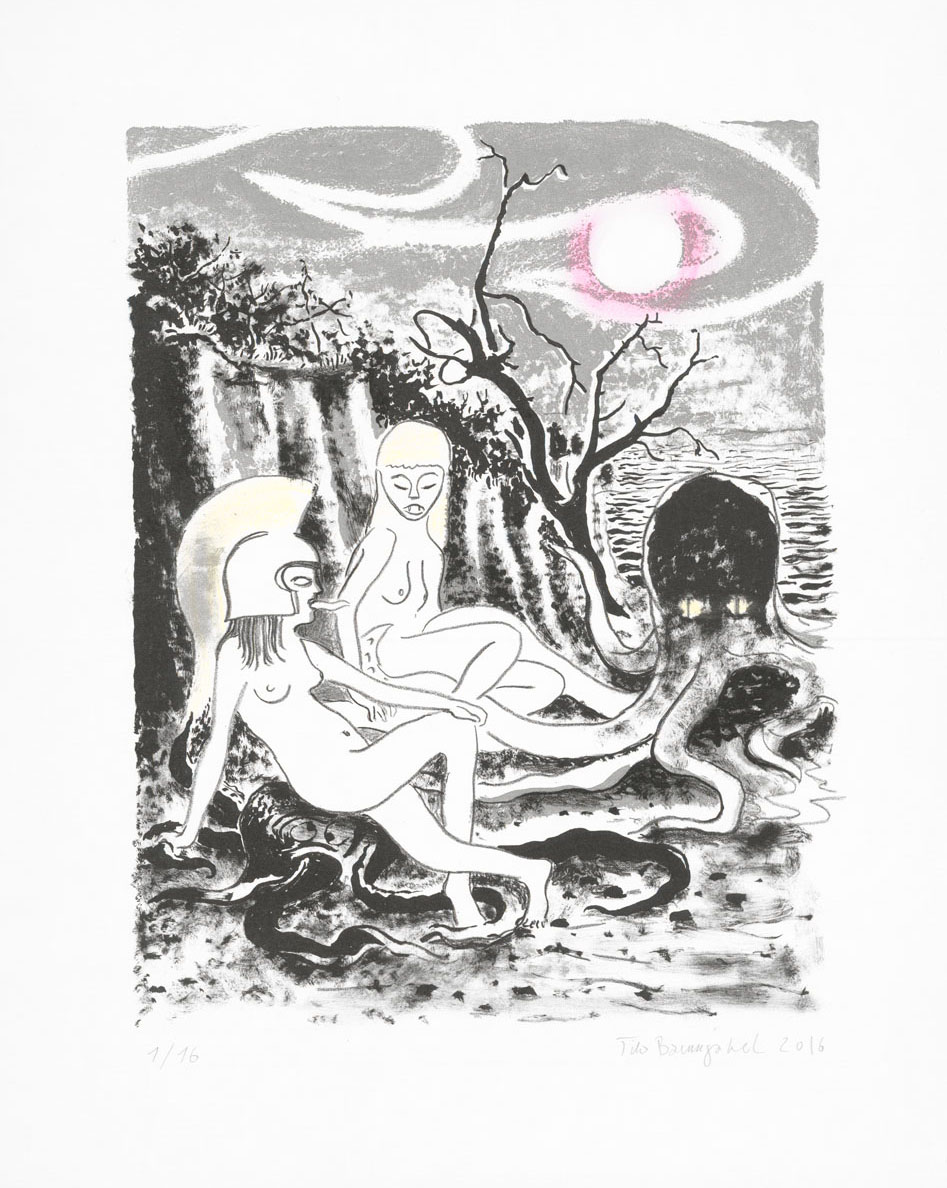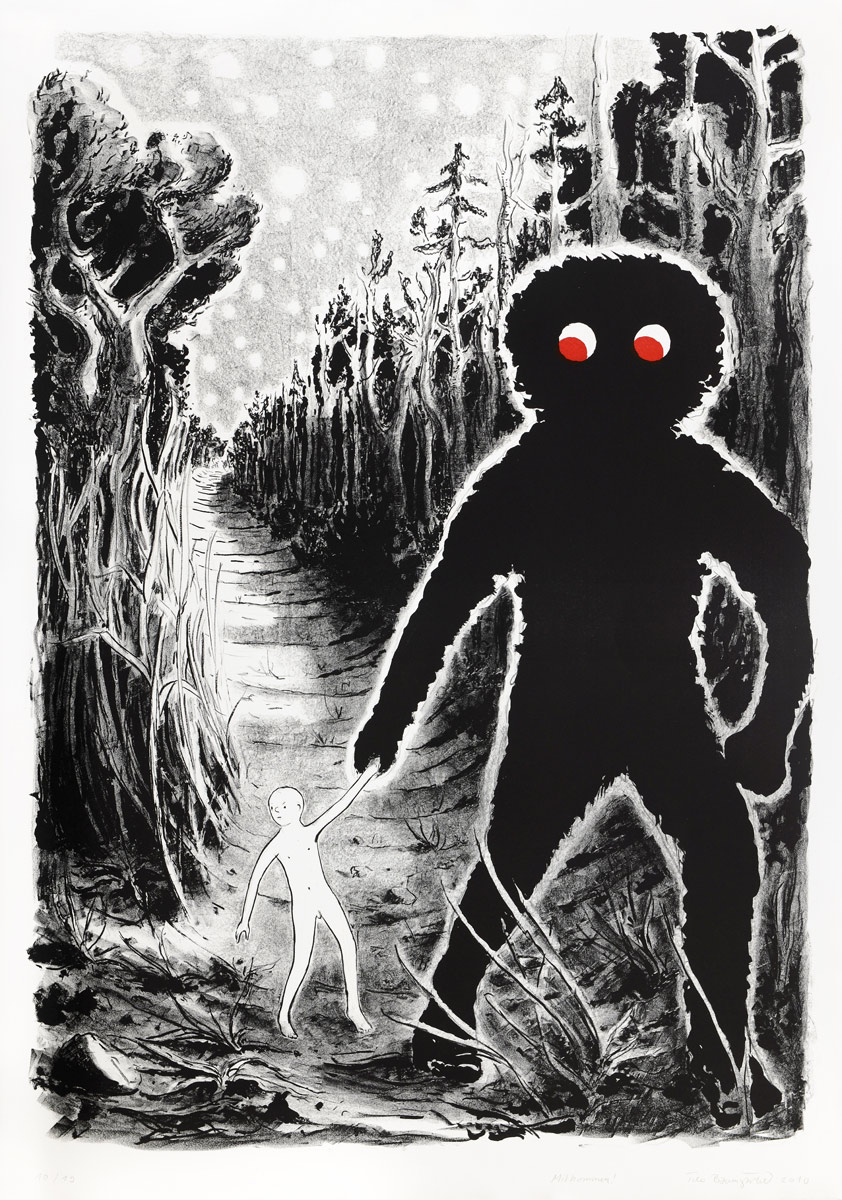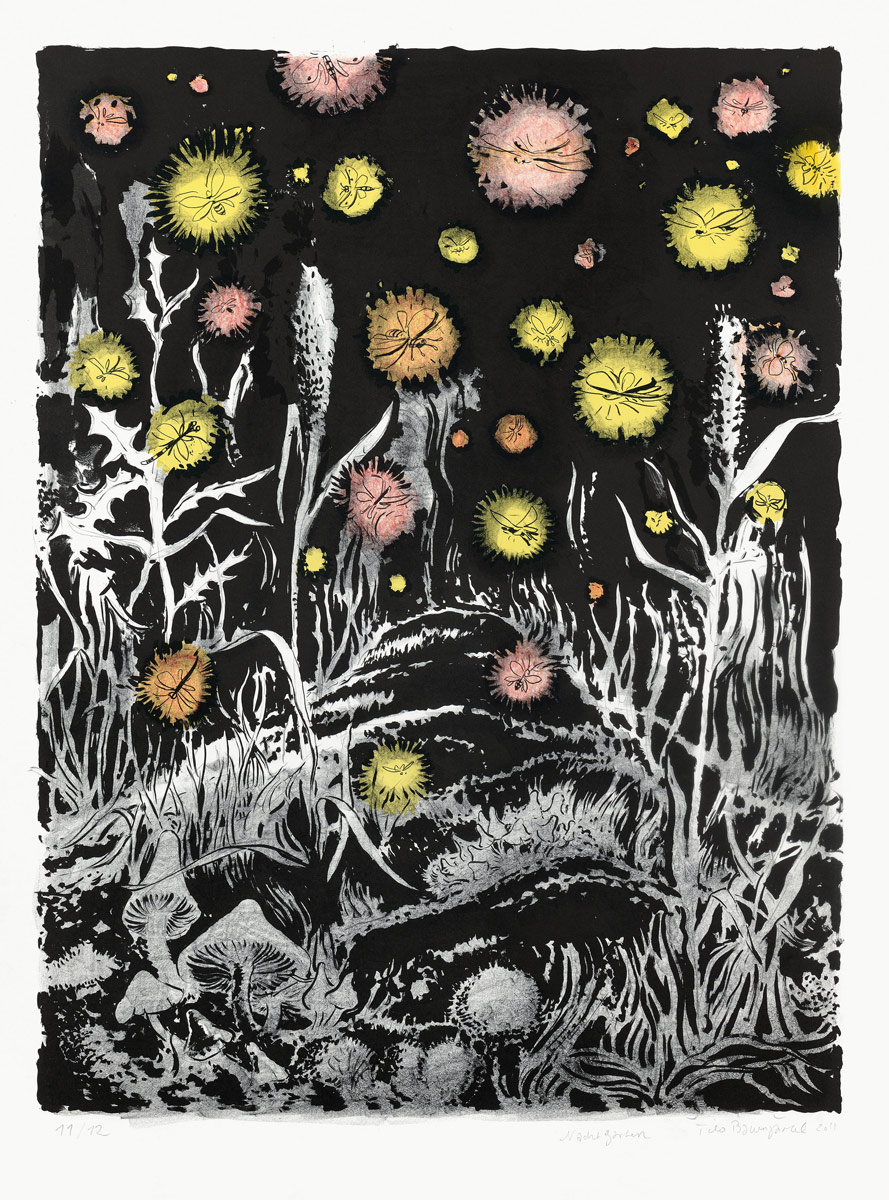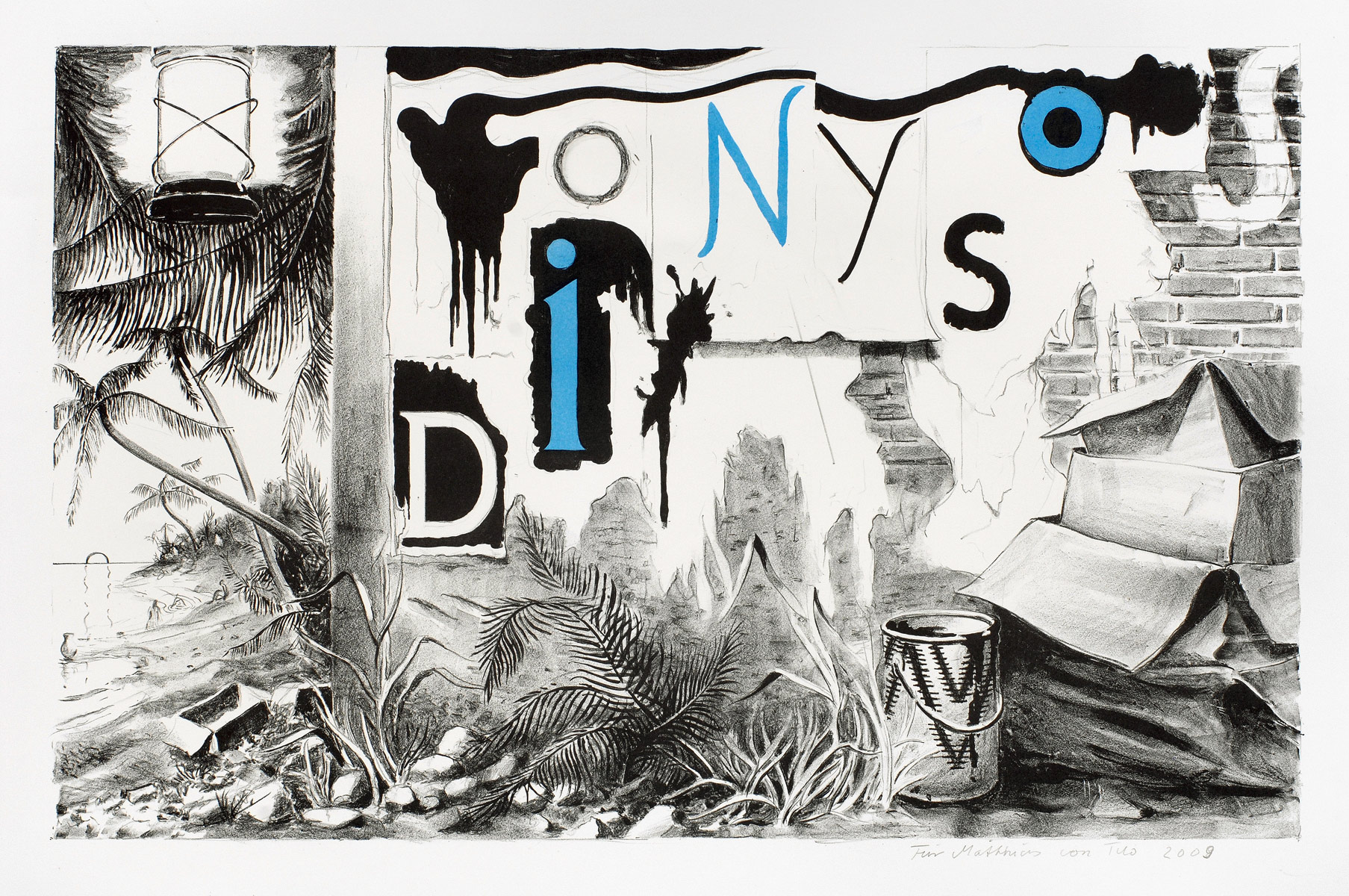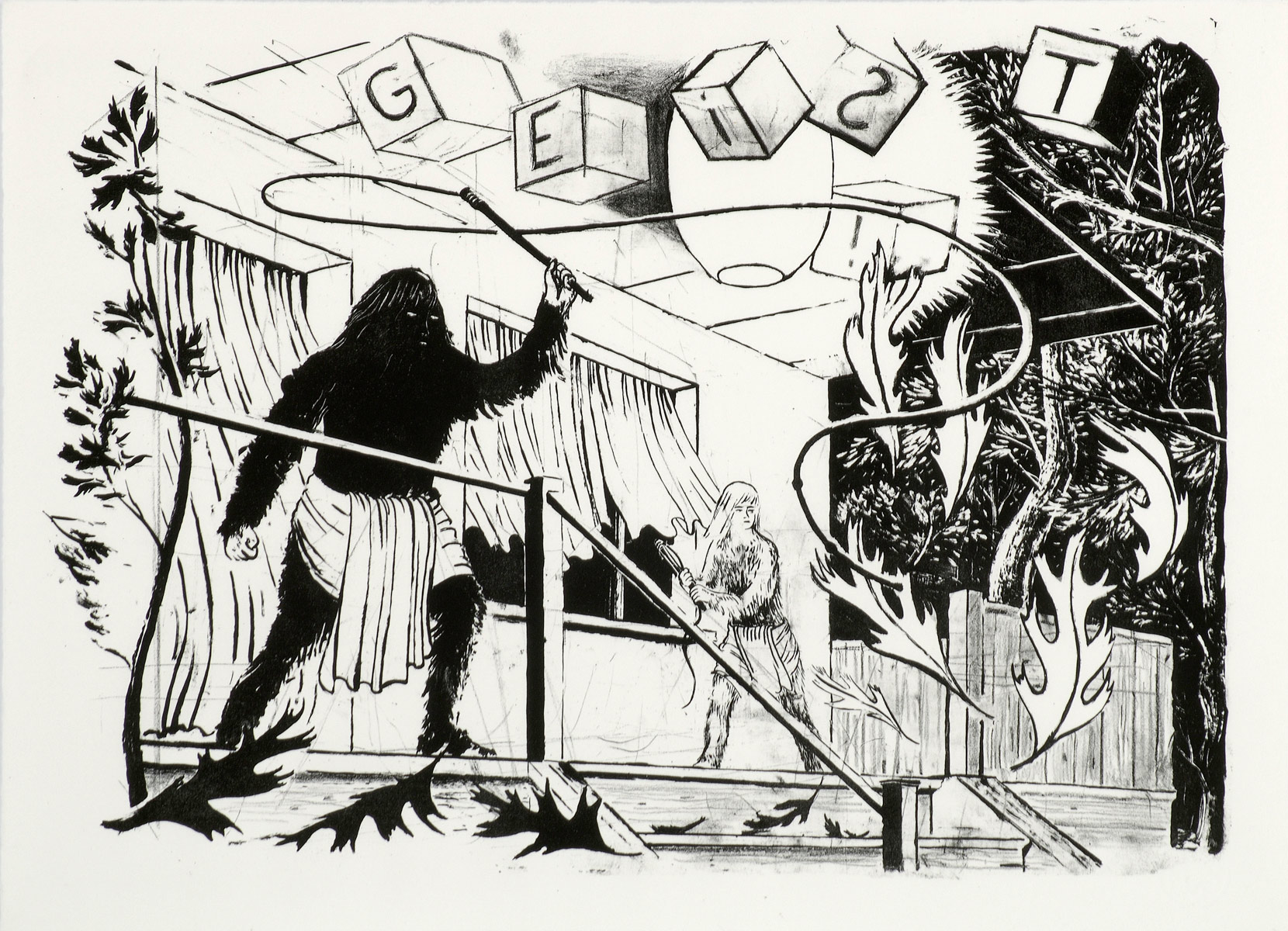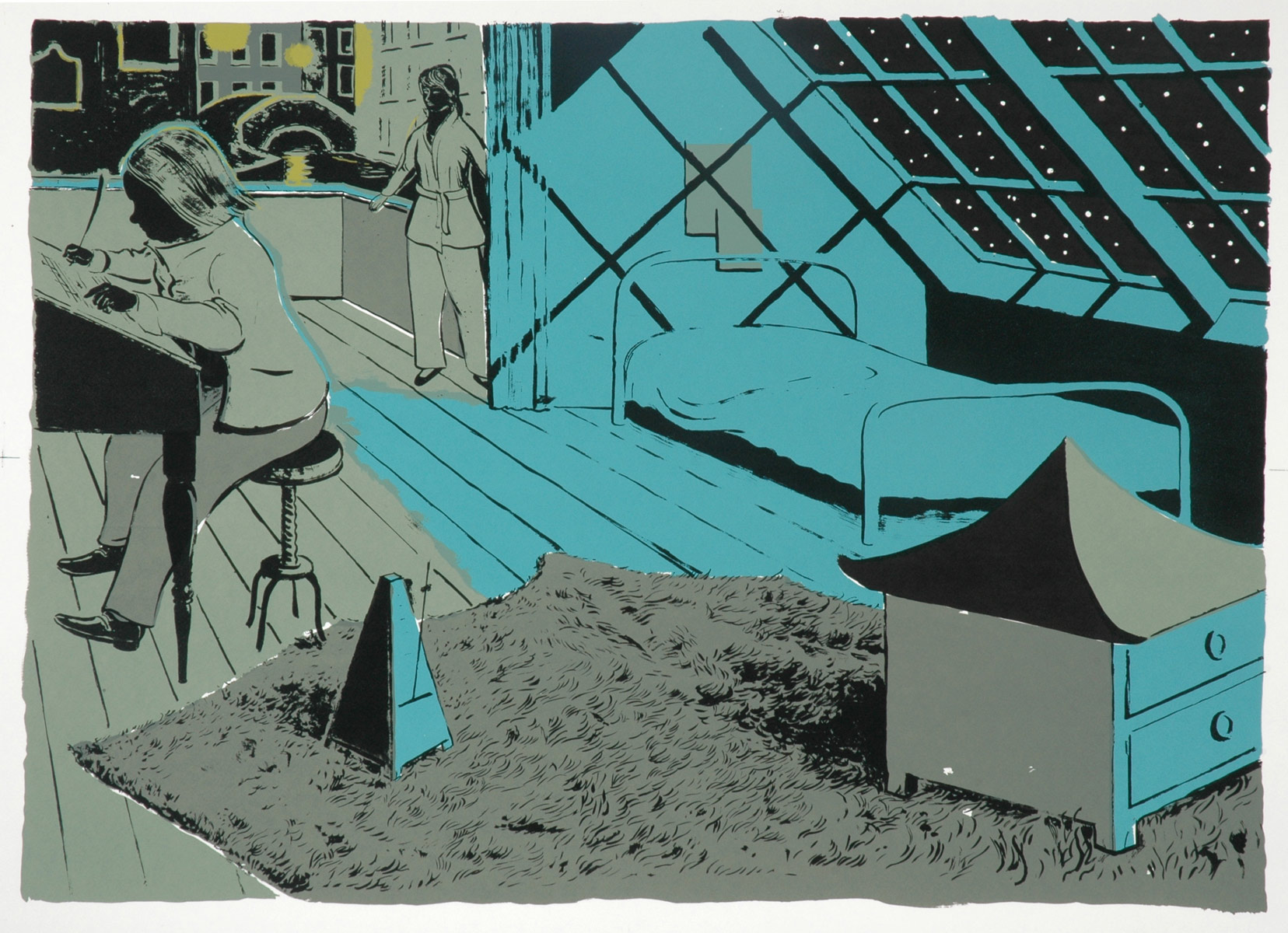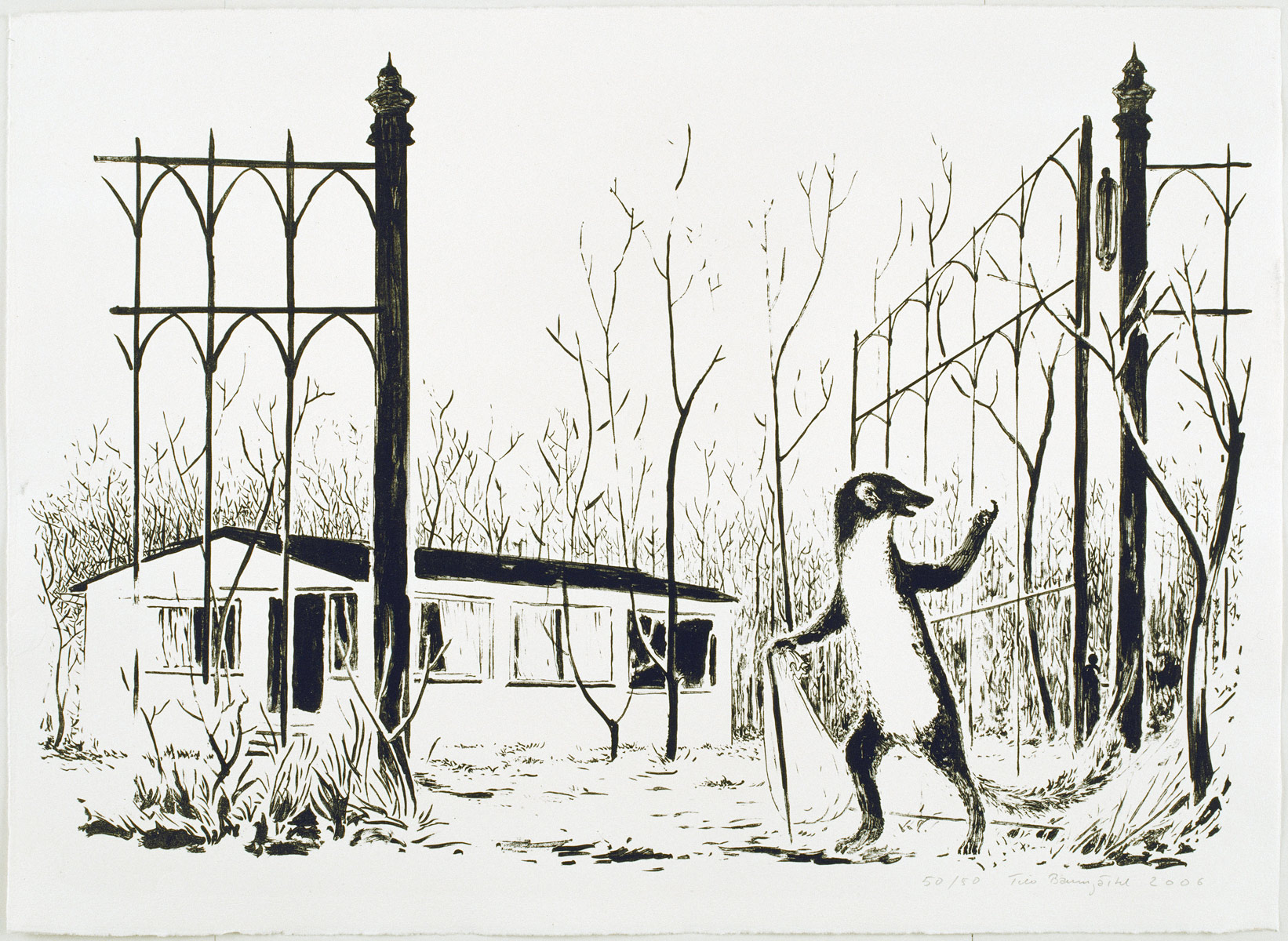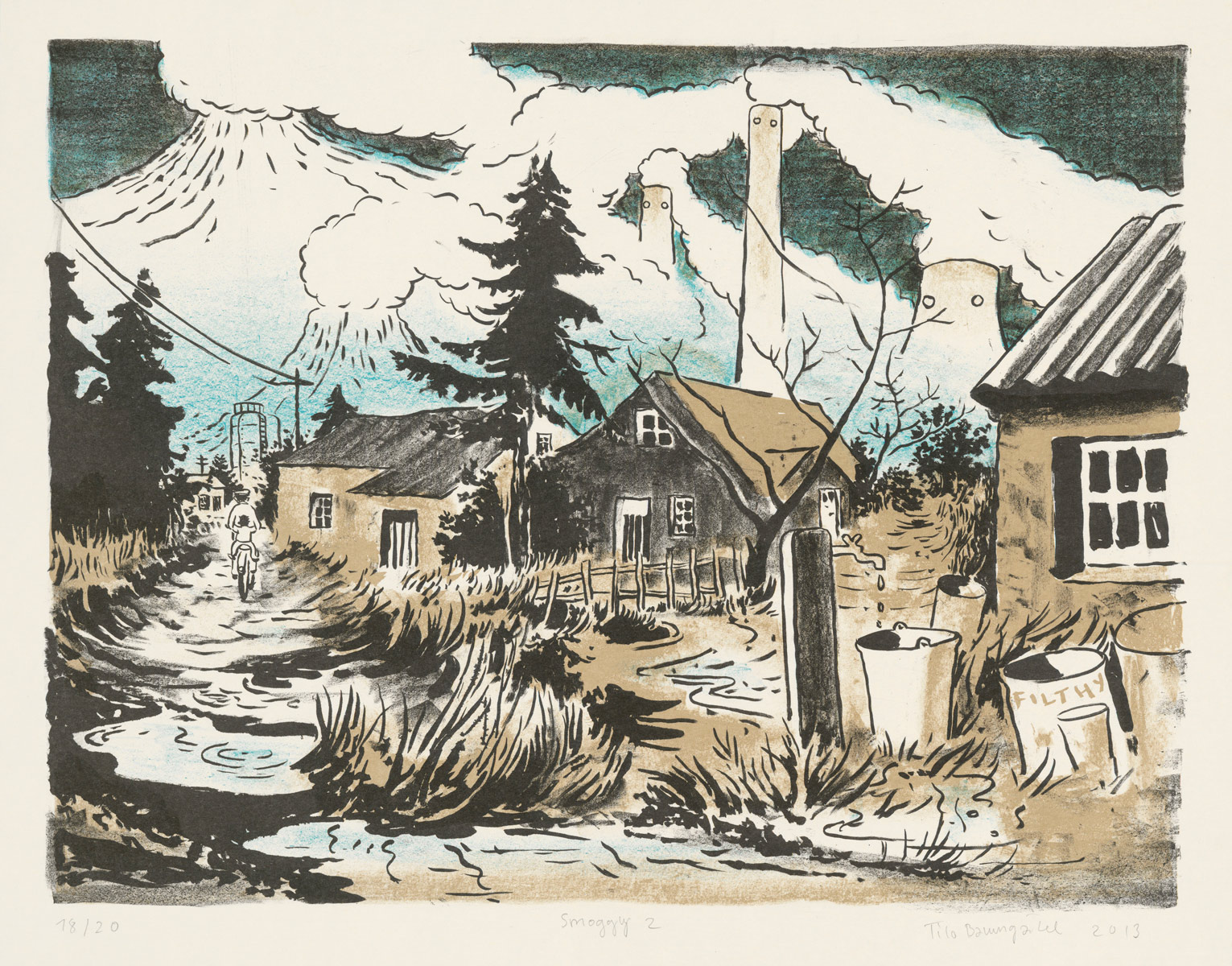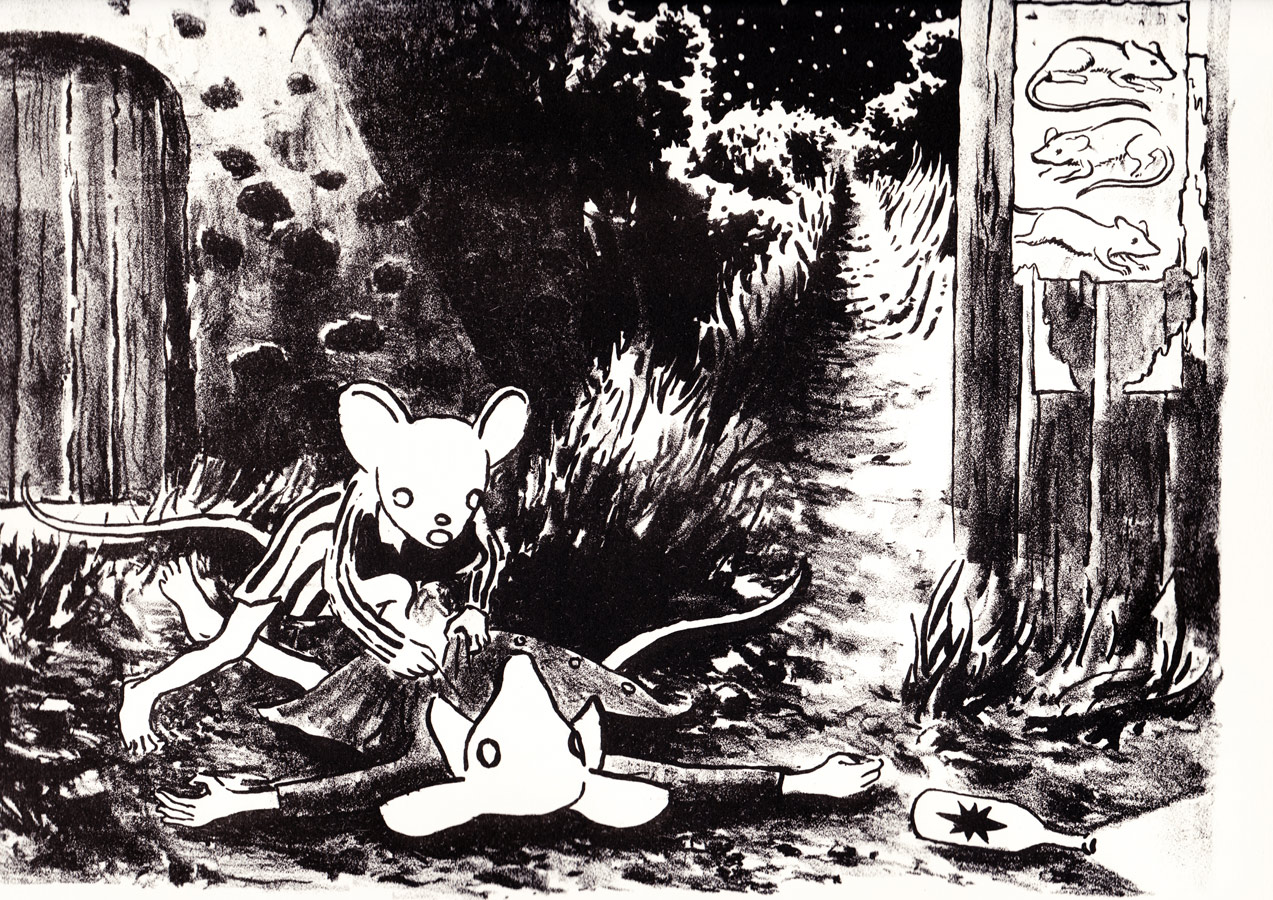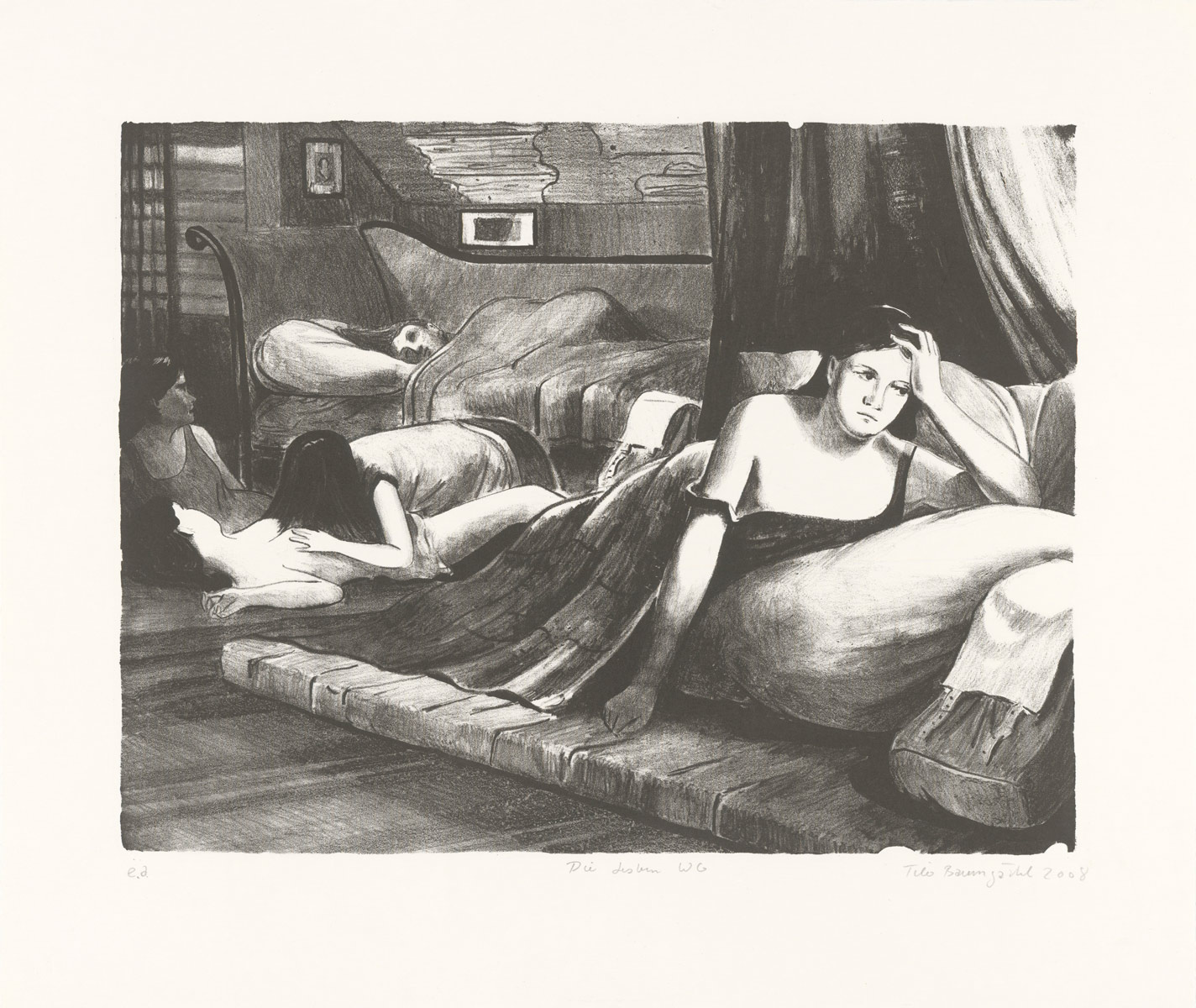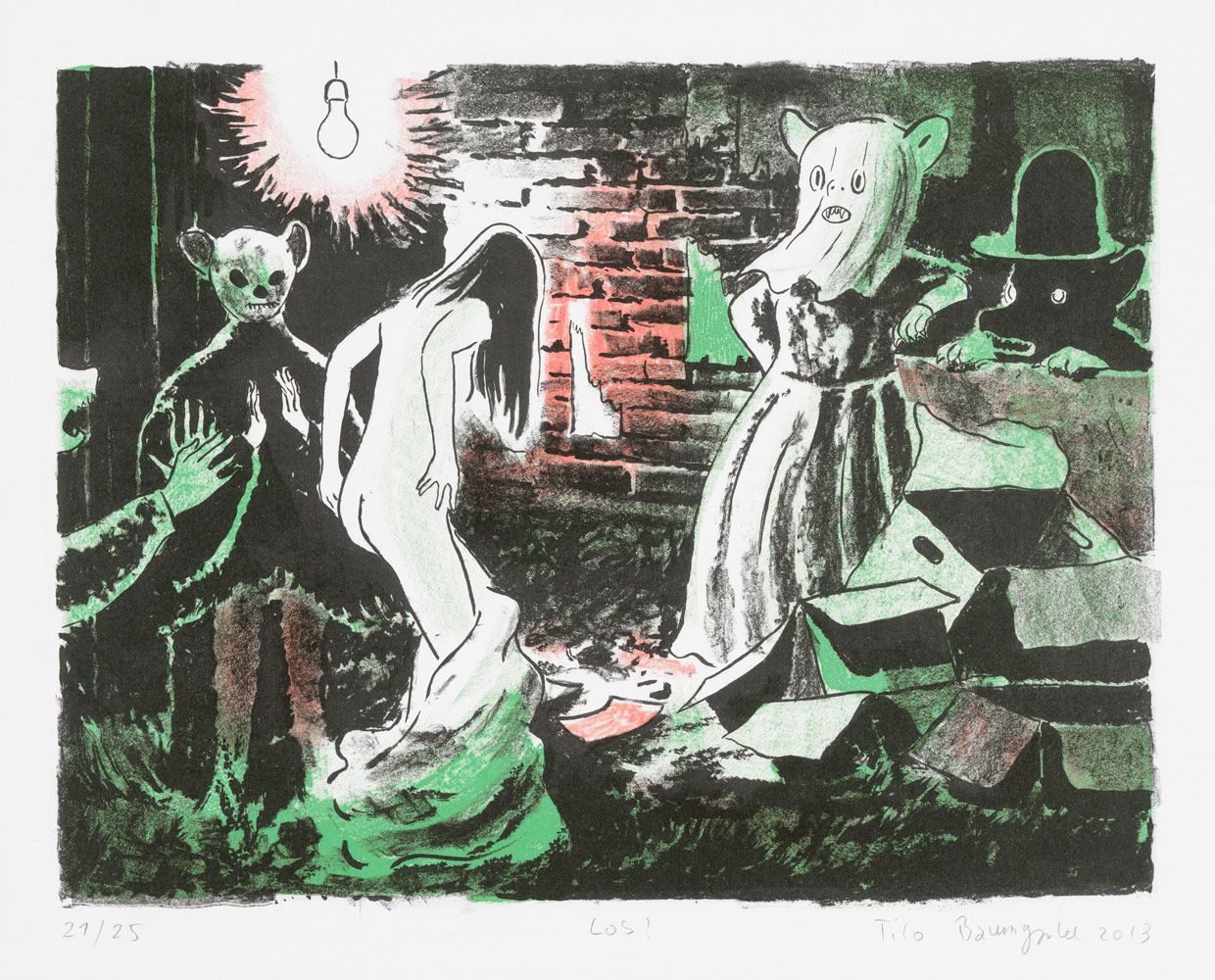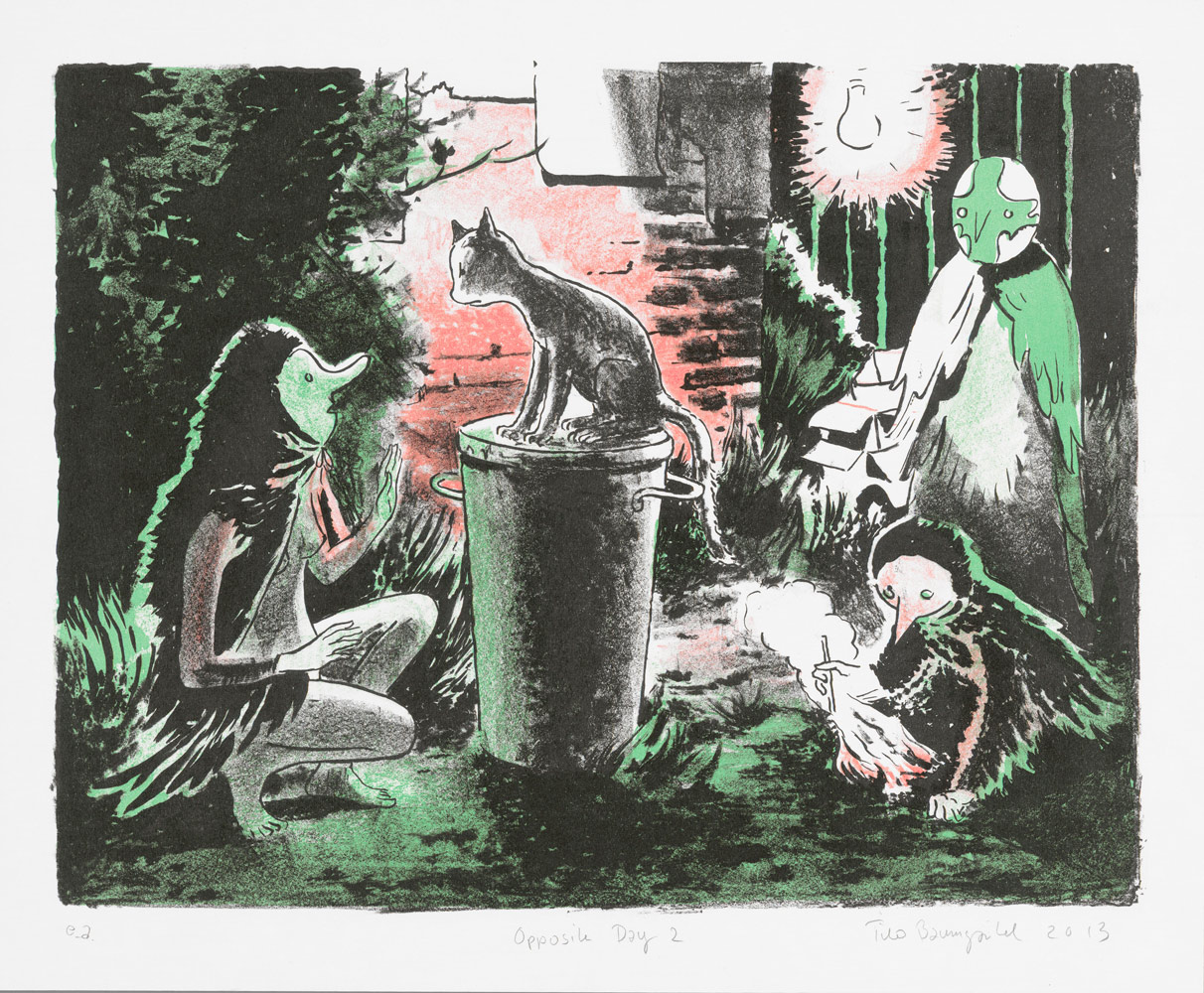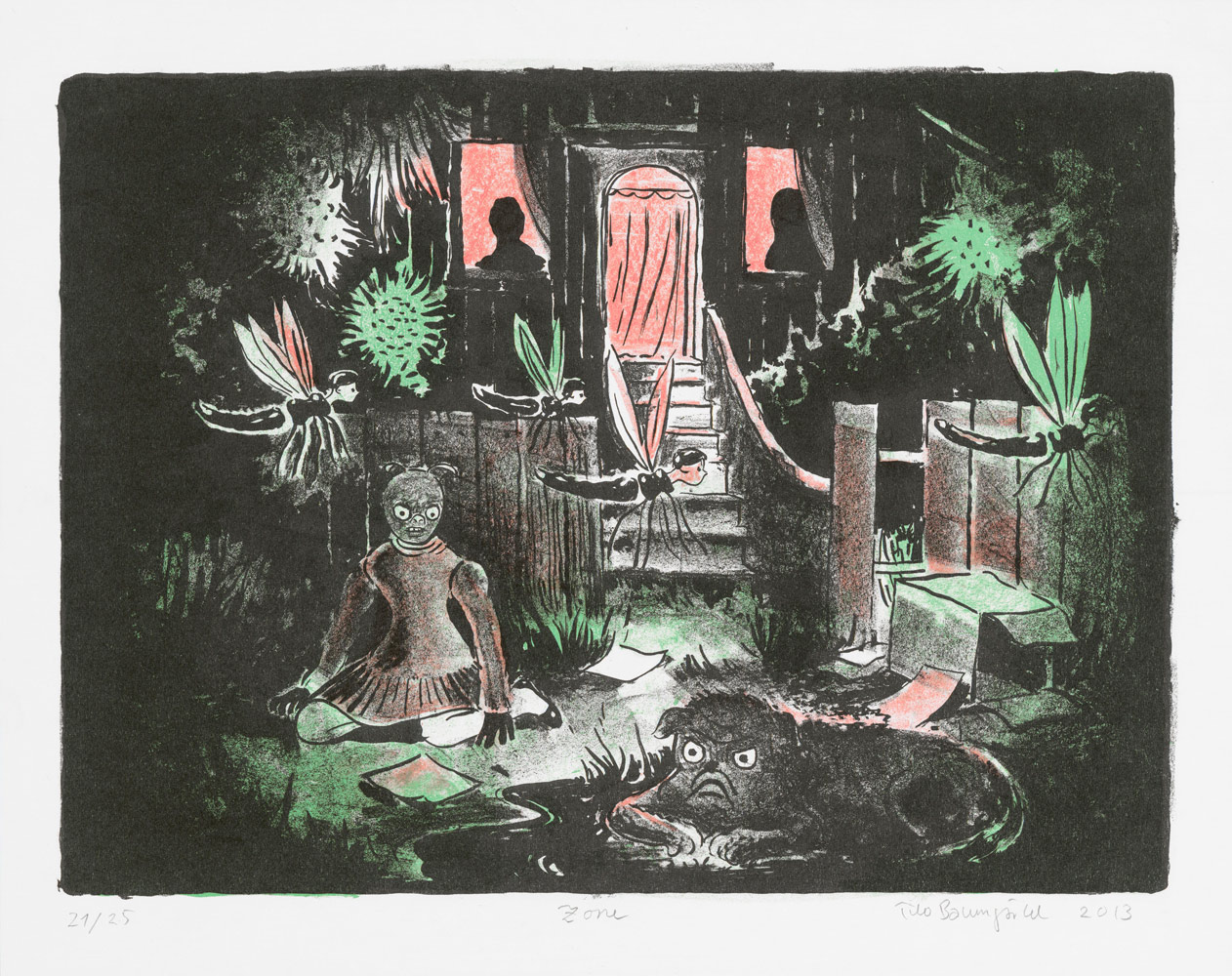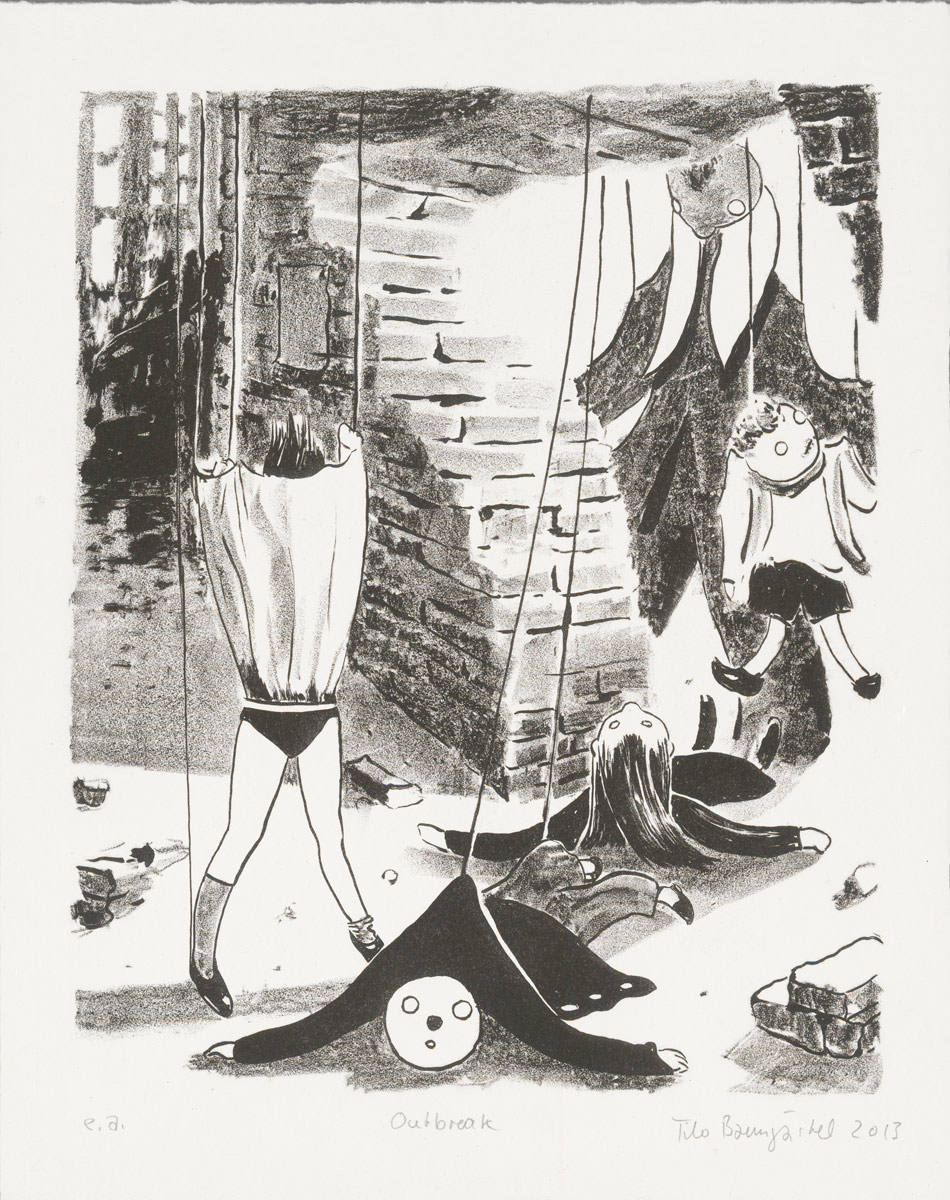Tilo Baumgärtel
Text
Interview mit Tilo Baumgärtel
Podcast "Die Leichtigkeit der Kunst"
Länge 58 Minuten
hier anhören
Little Nemo in Sachsenland - die Bildwelt des Tilo Baumgärtel
von Nils Ohlsen (in Tilo Baumgärtel - Senzo, Kerber Verlag und Galerie Kleindienst, 2006)
Tilo Baumgärtel realisiert seine Bildideen mit der Rationalität eines Bühnenbildners, der stets die Wahrnehmung des Betrachters im Sinn hat. Erstaunlich nüchtern und rational fallt der ehemalige Meisterschüler von Arno Rink kompositorische Entscheidungen. Anhand eines Werkes des niederländischen Barockmeisters Pieter de Hooch verweist er im Gespräch auf die begrenzten Möglichkeiten, den Übergang von einem Interieur in die Landschaft spannend zu gestalten. Die Trickkiste der Kunstgeschichte von der Renaissance bis zur Gegenwart gehört zum täglichen Werkzeug des Absolventen der Hochschule für Grafik und Buchkunst Leipzig. Auf der Leinwand wird zuerst der Raum angelegt. Ob er den Betrachter mit der Leere einer Landschaft konfrontiert wie in den früheren Werken, oder ihn mit einer Fülle von Details irritiert wie in den jüngeren Arbeiten, stets siedelt Baumgärtel seine Szenen zwischen Traum und Wirklichkeit an. Die Verschränkung unterschiedlicher Erzählperspektiven, der Kontrast zwischen immaterieller Farberscheinung und scheinbar greifbarer Stofflichkeit oder die Inszenierung des Raumes durch extreme Hell-Dunkel-Kontraste sind nur einige Möglichkeiten seines Repertoires, die Logik des Bildraumes zu brechen und die vermeintliche Schlüssigkeit einer Situation ins Wanken zu bringen. Wir sehen Urlauber, die sich mit futuristisch anmutenden Booten auf die Reise ins Ungewisse machen, Wanderer in unbekannter Mission oder Teenager in schummrigen Interieurs. Stark reduziert gezeichnet sind sie austauschbare Typen, die jeden individuellen Zug vermissen lassen. Baumgärtels Figuren warten vereinzelt vor weiten Landschaftskulissen oder lehnen schweigend an Wänden. Mal scheinen sie zu lauschen, mal in einer Bewegung innezuhalten, als würden sie in sich hineinhorchen. Sie stehen ohne erkennbare Handlung im knietiefen Wasser, starren wie imTagtraum an die Decke dämmriger Hotelzimmer oder sitzen versunken am Klavier, ohne zu spielen. Kommunikation findet nicht statt. Baumgärtels Protagonisten wirken oftmals wie Wesen aus einer fremden Welt. Eine Zeichnung mit einem schlafenden Mädchen, das aus ihrem Bett emporschwebt erinnert an die Bildergeschichten des "Little Nemo in Slumberland" von Winsor McCay, die vor einem Jahrhundert im New Yorker Herald erschienen. Cartoon für Cartoon oder Nacht für Nacht wird Little Nemo aus der Wirklichkeit seines Kinderzimmers in einen fantastischen Kosmos entführt, in denen er zum Zuschauer und Akteur atemberaubender Abenteuer wird, um dann im Moment gröBter Gefahr in das bürgerlich karge Schlafzimmer zurückgerufen zu werden. Zu eben solchen Passagen zwischen Traum, Albtraum und Realität lädt Tilo Baumgärtel uns ein.
- 1972 geboren in Leipzig
- 1991-1998 Studium der Malerei an der Hochschule für Grafik und Buchkunst Leipzig, Klasse von Prof. Arno Rink
- 1998-2000 Meisterschülerstudium bei Prof. Arno Rink
- 2015-16 Professur für Malerei an der Hochschule für Grafik und Buchkunst Leipzig
- seit 2018 Professur für Malerei an der Burg Giebichenstein Kunsthochschule Halle
- lebt und arbeitet in Leipzig
Einzelausstellungen
- 2025 Echoes of the Unseen (mit Mihael Milunovic), Museum Kampa, Prag
- 2023 The Same Water, Drents Museum, Assen
- Das selbe Wasser, Galerie Kleindienst, Leipzig
- 2022 Der Idiot, Westside, Leipzig
2020 Mafant, Galerie Kleindienst, Leipzig
2019 Nelly, Barlach Halle K, Hamburg - 2018 Nelly (mit Sebastian Hartmann), Museum der bildenden Künste, Leipzig
- 2017 Eclipse, Galerie Kleindienst, Leipzig
- 2016 Für den Wels sind Teiche Inseln, Galerie der Stadt Wels, Wels (Österreich)
- 2014 Cut Down Timber, Slag Gallery, New York
Gogo, Maksla XO Gallery, Riga (Lettland)
Terra, Galerie Kleindienst, Leipzig - 2012 Patron, Galerie Christian Ehrentraut, Berlin
- 2011 Nachtwache, Galerie Kleindienst, Leipzig
Malerei und Zeichnungen, Art-Etage, Biel (Schweiz)
Tilo Baumgärtel, Kunsthal Amersfoort (Niederlande)
Bummelnde Raketenträger, Philara, Düsseldorf (mit Nadin Rüfenacht) - 2010 Ganz Ohr, Galerie Christian Ehrentraut, Berlin
- 2009 Malerei, Wilkinson London
- 2008 Der Sturm, Galerie Kleindienst, Leipzig
- 2006 Safn Gallery, Reykjavik (Island)
Kunsthalle Emden
Wilkinson Gallery, London - 2005 Senzo, Galerie Kleindienst, Leipzig
- 2004 Wilkinson Gallery, London
- 2003 Galerie LIGA, Berlin
Galerie Kleindienst, Leipzig - 2002 Gerhardt von Reutern Haus, Willingshausen
Galerie LIGA, Berlin
Hydroplan, Museum der bildenden Künste, Leipzig - 2001 Kanalpatrouille 1, Kunstverein, Leipzig
Kanalpatrouille 2, Galerie Kleindienst, Leipzig - 2000 Kunstraum b2, Leipzig
Galerie Kleindienst, Leipzig - 1998 Galerie Toni Zeckl, Leipzig
Ausstellungsbeteiligungen
- 2025 Hotspot Leipzig, Drents Museum, Assen (Niederlande)
Totgelacht, Collegium Hungarium Berlin
Rolling, Action ... Paint!, Vestfossen Kunstlaboratorium (Norwegen)
2024 Hunger nach Bildern, Museum No Hero, Delden (Niederlande)
Licked by the Waves, Museum More, Gorssel (Niederlande)
Greetings from LE, Jari Lager Gallery, Köln
2023 Mashup 8, Gosh, Leipzig - Überdruck, Kaisertrutz Görlitz, Kaisertrutz
- 2022 Bilderkosmos Leipzig. 1905-2022, Museum der bildenden Künste, Leipzig
Bang! Die Rückkehr der Malerei, Galerie Noah, Augsburg
2021 Minerva meets Leipzig in Assen, Drents Museum, Assen (Niederlande)
German Painting Now, Telegraph, Olomouc (Tschechien)
2020 Gestern, heute, übermorgen, Brandenburgisches Landesmuseum für Moderne Kunst, Frankfurt/Oder
Tilo Baumgärtel - Oskar Rink - Simon Adam Peter, Museum Bensheim - 2019 Doubles, Kunsthalle Sparkasse Leipzig
- Das Kollegium, Grafikstiftung Neo Rauch, Aschersleben
Nähe und Dystans, Landtag Brandenburg, Potsdam - The Leipzig Connection, Croatian Association of Artists (HDLU), Zagreb (Kroatien)
- 2018 Die neuen Leipziger, Galerie Noah, Augsburg
- Malerei aus Leipzig, Antonio Colombo, Mailand
- Eros und Thanatos. Sammlung SØR Rusche Oelde/Berlin, Museum Abtei Liesborn, Liesborn
- MdbK meets G2. Malerei aus Leipzig ab 2000, Museum der bildenden Künste, Leipzig
- 30 ziehen durch die Stadt, Mash up & Affenfaustgalerie, Hamburg
- Zeigen und Sagen, Deutsche Bundesbank Geldmuseum, Frankfurt am Main
- 2017 Ladder to Heaven, Neuer Pfaffenhofener Kunstverein, Pfaffenhofen
- Het Wilde Westen. Van Buffalo Bill Tot Bobbejan, De Warande, Tournhout und Venetiaanse Gaanderijen, Oostende (Belgien)
- Occupation. Videoarbeiten aus dem Kunstfonds, Staatliche Kunstsammlungen, Dresden
- Pentomino #4, Thaler Originalgrafik, Leipzig
- 2016 The Cat Show, PAPER Gallery, Manchester (GB)
363. Bilderwahl, Griffelkunst, Hamburg - Bittersüße Zeiten - Vergangenheit und Gegenwart, Edwin-Scharff-Museum, Neu-Ulm
Bittersüße Zeiten, Städtische Galerie Regensburg - Storyteller. Zeitgenössische Kunst aus Leipzig, Nationales Kunstmuseum & Goethe-Institut Hanoi (Vietnam)
- LUBOK - Druckgrafik und Künstlerbücher, Oberpfälzer Künstlerhaus, Schwandorf
Made in Germany: Contemporary Art from the Rubell Family Collection, McNay Art Museum, San Antonio, Texas
How to find true love, Bikini, Berlin - 2015 Ikonisch. Das Bild als Referenz, Goethe Institut, Madrid
Sommer Nacht Traum, Museum Sinclair-Haus, Bad Homburg
Die Schenkung Böhm, Museum der bildenden Künste Leipzig
Don't shoot the painter - from the UBS Collection, Modern Art Gallery, Mailand
Wasserlandschaften-Waterscapes, Stadtgalerie Kiel
Nocturne. Ahnung, Abgrund und Apokalypse in der zeitgenössischen Kunst, Kunsthalle der Sparkasse, Leipzig
Beuys ohne Hut - Karin Szekessy fotografiert Künstler, Horst-Janssen-Museum, Oldenburg
Bittersüße Zeiten. Barock und Gegenwart in der SØR Rusche Sammlung Oelde/Berlin, Kunsthaus Apolda Avangarde, Apolda
Leipzig - Heldenstadt?, Goethe-Institut, Marseille
Drawing, Galerie Dukan, Paris
Vom Großen und Ganzen. Sammlung Haus N, Heribert-Gerisch-Stiftung, Neumünster
Leipzig 2015. Sammlung Hildebrand, G2 Kunsthalle, Leipzig
Werkschau der Spinnereikünstler, Werkschauhalle, Leipzig
MASH UP 2, Hardenbergstraße, Leipzig
Vertraute Gesellschaft, Thaler Originalgrafik, Leipzig - 2014 Mensch werde wesentlich,Kunstverein FAK, Zwickau
bb, Galerie Kleindienst, Leipzig
Bittersüße Zeiten, Barock und Gegenwart in der SØR Rusche Sammlung Oelde/Berlin, Kunsthaus Stade
BGL#4 - in between, Kesselhaus, Bergisch Gladbach / Köln
Neue Bildwelten aus Leipzig, Heike Moras Art, London
Das flüssige Element. Seestücke des 17. und 21. Jahrhundert aus der SØR Rusche Sammlung Oelde/Berlin, Kunstmuseum Ahrenshoop, Ahrenshoop
Die halluzinierte Welt - Malerei am Rande der Wirklichkeit, Haus am Lützowplatz, Berlin
This Side of Paradise, Sotheby's Gallery S2, London
Leipzig - Cité des heros?, Goethe-Institut, Paris
Amorphophallus, Galerie Ehrentraut, Berlin - 2013 Ortsbestimmung, Kulturhistorisches Museum Görlitz
Pittbullbutterfly, Galerie Leuenroth, Frankfurt / M.
Schöne Landschaft - Bedrohte Natur. Alte Meister im Dialog mit zeitgenössischer Kunst, Kunsthalle Osnabrück
acht mal zeichnung - Linien und Systeme aus Leipzig, Kunstverein Leipzig
Sachsen/Werke aus der Sammlung der Deutschen Bank, Museum der bildenden Künste, Leipzig
LUBOK in Mexiko, Museo de la Estampa del Instituto Mexiquense de Cultura, Toluca (Mexiko)
Tierstücke - der SØR Rusche Sammlung Oelde/Berlin, Abtei Liesborn
Jetzt+Hier. Gegenwartskunst aus dem Kunstfonds, Kunsthalle im Lipsiusbau, Dresden
LUBOK. Grafica contemporanea y libros de artistas de Leipzig, Galería de Arte Contemporáneo del Teatro Isauro Martínez Torreón, Coahuila, México
Cliche Verre, Spinnerei archiv massiv, Leipzig - 2012 Malerei der ungewissen Gegenden, Frankfurter Kunstverein
Leipzig Art Panorama, Seongnam Art Center, Seoul (Südkorea)
Eros und Thanatos (SØR Rusche Collection), Werkschauhalle Leipzig
to get here, Wendt+Friedmann Galerie, Berlin
The Future Lasts Forever, In.ter.alia, Seoul (Südkorea)
Personalities on Paper, Ornis A. Gallery, Utrecht
Alles Wasser, Galerie Mikael Andersen, Berlin
Sieben Blicke - Sammlung Philara, Künstlerverein Düsseldorf
Lubok, fica contemporánea y libros de artistas de Leipzig, Museo Nacional de la Estampa, Mexico City - 2011 After the Goldrush, Kunstverein Speyer
Lubok, Kunstmuseum Spendhaus, Reutlingen
Convoy Leipzig, Biksady Gallery, Budapest
Leipzig Painters, Gallery Baton, Seoul (Südkorea)
Saxonia Paper, Kunsthalle der Sparkasse Leipzig - 2010 An die Natur. Die Altana Kunstsammlung, Galerie für Zeitgenössische Kunst, Leipzig
Silent Revolution, Kunstmuseum Kerava, Kerava (Finnland)
5. Drawing Biennale, Momentum Kunsthalle Moss, Moss (Norwegen)
Parallels: Young contemporary painting from Norway/Leipzig, Kistefos Museum, Oslo
Schnittstelle Druck, Museum der Bildenden Künste und Hochschule für Graphik und Buchkunst, Leipzig - 2009 Leipzig Calling, Academy of Art, New York
60/40/20. Kunst in Leipzig seit 1949, Museum der Bildenden Künste, Leipzig
Carte Blanche IX: Vor heimischer Kulisse - Kunst in der Sachsen Bank / Sammlung Landesbank Baden-Württemberg, GfZK, Leipzig - 2008 The Leipzig Phenomenon, Kunsthalle Budapest
Daydreams & Dark Sides, Künstlerhaus Bethanien, Berlin
Drawcula, Galerie Kleindienst, Leipzig
Neue Leipziger Schule, Cobra Museum, Amstelveen (Niederlande) - 2007 Made in Leipzig, Sammlung Essl im Schloss Hartenfels, Torgau
- 2006 Update East – West, Pintura Allemania de Vanguardia en el MACUF
Artists from Leipzig, Arario Gallery, Peking
Made in Leipzig, Sammlung Essl, Wien - 2005 David, Matthes und Ich, Bielefelder Kunstverein
David, Matthes und Ich, Kunstverein Nürnberg
Cold Hearts: Artists from Leipzig, Arario Gallery, Seoul (Südkorea) - 2004 Clara Park – Marianne Boesky Gallery, New York
- 2003 Sieben mal Malerei, Museum der bildenden Künste, Leipzig
Painting Show, Antony Wilkinson Gallery, London
Galleri Nicolai Wallner, Kopenhagen
Future – Five Artists from Germany, Sandroni Rey Gallery, Los Angeles - 2002 Neuer Realismus, Galerie Rothamel, Erfurt
Städtische Galerie, Speyer
Kunstspeicher Oldenburg
Metallgalerie, Frankfurt/Main
Galerie LIGA, Berlin - 2000 LIGA, Steibs Hof, Leipzig
Bühnenbild / Animation
- 2025 ALSO SPRACH ZARATHUSTRA, Schauspielhaus Zürich
- 2021 Das Buch der Unruhe (Fernando Pessoa), Staatsschaupiel and Albertinum Dresden
Lear (William Shakespeare), Deutsches Theater Berlin
Divina Commedia Festival mit dem Gewandhausorchester Leipzig, Moritzbastei Leipzig
2020 Der Zauberberg (Thomas Mann), Deutsches Theater Berlin
Noises Off (Michael Frayn), Staatschauspiel Dresden
2019 Schuld und Sühne (Fjodor Dostojewski), Staatsschauspiel Dresden
2018 Erniedrigte und Beleidigte (Fjodor Dostojewski), Staatsschauspiel Dresden
Hunger (Peer Gynt), Deutsches Theater Berlin
Gespenster (Strindberg, Ibsen, Heine), Deutsches Theater Berlin
2016 Berlin Alexanderplatz (Alfred Döblin), Deutsches Theater Berlin
2012 Der Trinker (Hans Fallada), Maxim Gorki Theater Berlin
Krieg und Frieden (Leo Tolstoi), Centraltheater Leipzig
Stipendien / Preise
- 2002 Kunstpreis der Sachsen LB
Stipendium des Landes Sachsen in Columbus/Ohio
Landesstipendium Hessen - 2001 Stipendium der deutschen Studienzentrale Venedig
- 1997 Stipendium der Studienstiftung des Deutschen Volkes
Bibliografie
- 2016 Leipziger Maler in Wels, nachrichten.at, 12.02.2016
- 2015 Senza Parole (Katalog), Galerie Kleindienst / LUBOK Verlag, Leipzig
Charlotte Mullins: Tilo Baumgärtel, Picturing People. The New State of Art, Thames & Hudson, London
Nocture. Ahnung, Abgrund und Apokalypse in der zeitgenössischen Kunst (Katalog), Stadt- und Kreissparkasse Leipzig - 2014 GOGO - Tilo Baumgärtel (Katalog), Galerie Kleindienst & LUBOK Verlag, Leipzig
Jens Kassner: Eigentlich Romantiker, Leipziger Volkszeitung (LVZ), 10.01.2015
Anna Iltnere: Stress is the Opposite of Art. An Interview with German Painter Tilo Baumgärtel, arterritory.com, 20.08.2014
Opening of Tilo Baumgärtels Exhibition in Riga, Riga2014.org, 01.08.2014
This Side of Paradise (Katalog), S2 Sothebys, London - 2012 The Future Lasts Forever (Katalog), in.ter.alia, Seoul (Südkorea)
German Now. From Leipzig (Katalog), Seongnam Arts Center und UNC Galerie, Seoul (Südkorea)
Katinka Fischer: Erotischer Akt in ungewissen Gegenden, Frankfurter Allgemeine Zeitung (FAZ), 27.07.2012
Xamou Art: Tilo Baumgärtel the New Leipzig School Artist, Xamou Art, 07.08.2012
Tim Walsh: Painting of Uncertain Places, This is tomorrow. Contemporary Art Magazine, 10.09.2012 - 2011 Christoph Tannert: Tilo Baumgärtel, Vitamin P2. New Perspectives in Painting, Phaidon, London/New York
Convoy Leipzig (Katalog), Biksady Galerie, Budapest
Tilo Baumgärtel: Bergwerk aus Backstein, Spinart Magazin, 01.05.2011
Jens Kassner: Leipzig malt weiter, Leipziger Volkszeitung (LVZ), 30.04.2011 - 2010 Lines on the move. Drawing Biennal 2010 (Katalog), Tegnerforbundet, Oslo / Galleri F15, Moss (Norwegen)
- 2009 Tilo Baumgärtel - Skizzen 2002-08 (Katalog), LUBOK Verlag, Leipzig
Tony Godfrey: Painting Today, Phaidon, London/New York
Benjamin Ferguson: Interview with Tilo Baumgärtel, www.artslant.com, September 2009 - 2008 Kunstwerkstatt - Tilo Baumgärtel (Katalog), Prestel, München/Berlin
Neue Leipziger Schule (Katalog), Cobra Museum of Modern Art, Amstelveen (Niederlande) - 2006 Tilo Baumgärtel - Senzo (Katalog), Galerie Kleindienst, Leipzig / Kerber Verlag, Bielefeld
Arthur Lubow: The New Leipzig School, The New York Times, 08.01.2006 - 2005 Kalte Herzen. Künstler aus Leipzig (Katalog), Arario Gallery, Chungnam (Südkorea)
David, Matthes und ich (Katalog), Verlag für Moderne Kunst, Nürnberg
The Triumph of Painting (Katalog), Saatchi Gallery, London
Gregory Volk: Figuring the New Germany, Art in America, Juni/Juli 2005
Manuela Thieme: Dschungel-Tour, Das Magazin, Oktober 2005 - 2004 Ken Johnson: Clara Park. Postions of Contemporary Painting from Leipzig, New York Times, 24.09.2004
Maura Egan: Neue School, New York Times Magazine, 09/2004
Kristof Rouvel / Antonius Bracht: Tilo Baumgärtel. The artist as critic of reason, East International, Norwich School of Art and Design
Eastory (Katalog), Gallery Suzanne Tarasieve, Paris,
Gerhard Mack / Gregor Hohenberg: Die Stadt der Leinwandhelden, Art, 12/2004 - 2002 Tilo Baumgärtel - Hydroplan (Katalog zum Kunstpreis der Sachsen LB), Museum der Bildenden Künste / Galerie Kleindienst, Leipzig
Tilo Baumgärtel (Katalog), Sparkassen-Kultursttíftung Hessen-Thüringen / Kreissparkasse Schwalm-Eder - 2001 Tilo Baumgärtel. Arbeiten von 1997-2001 (Katalog), Galerie Kleindienst, Leipzig



